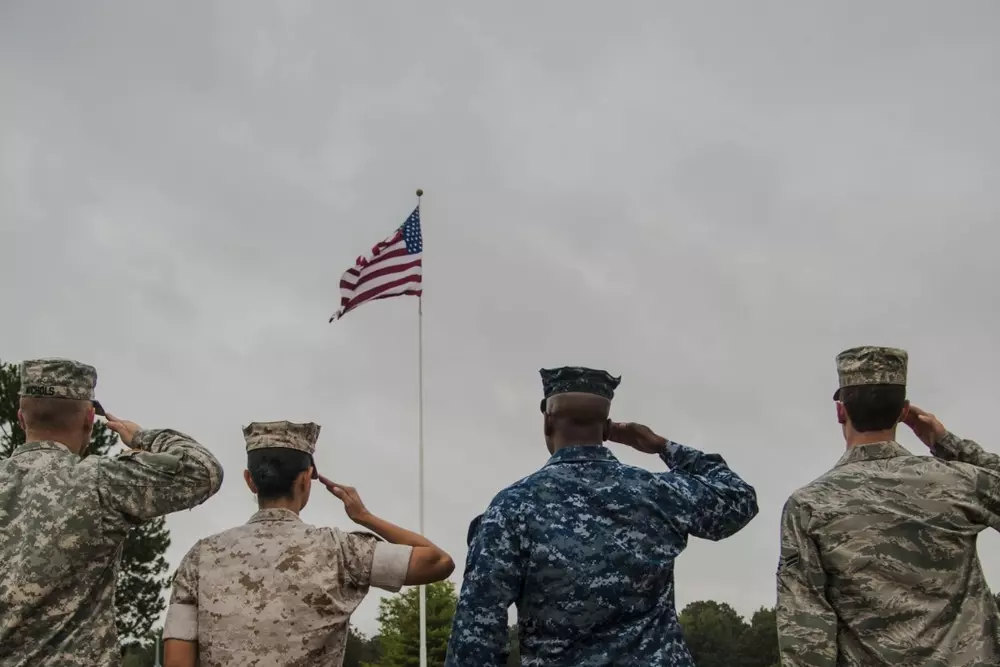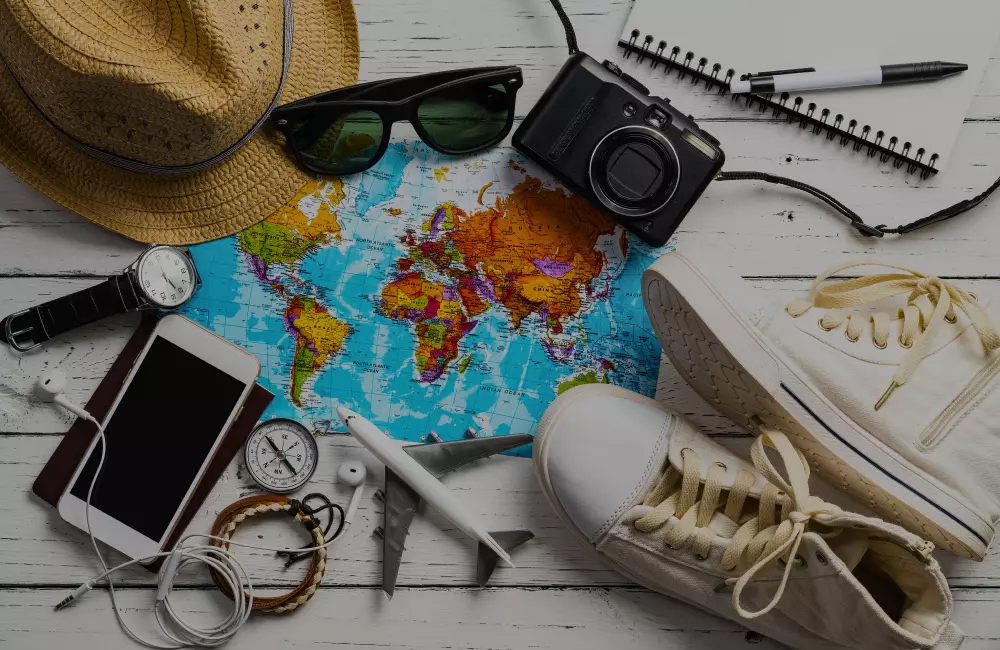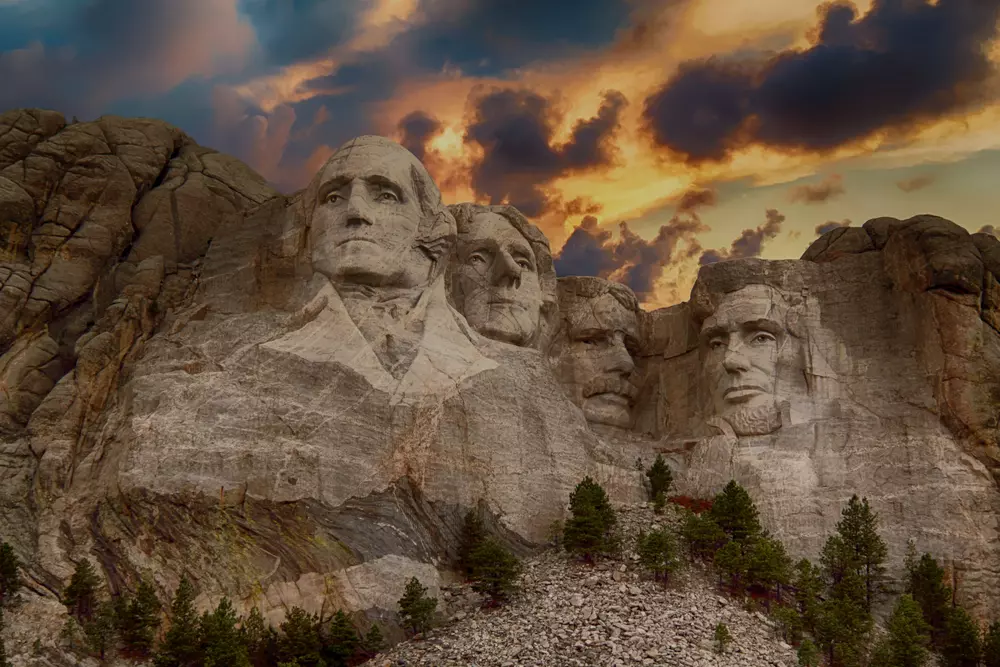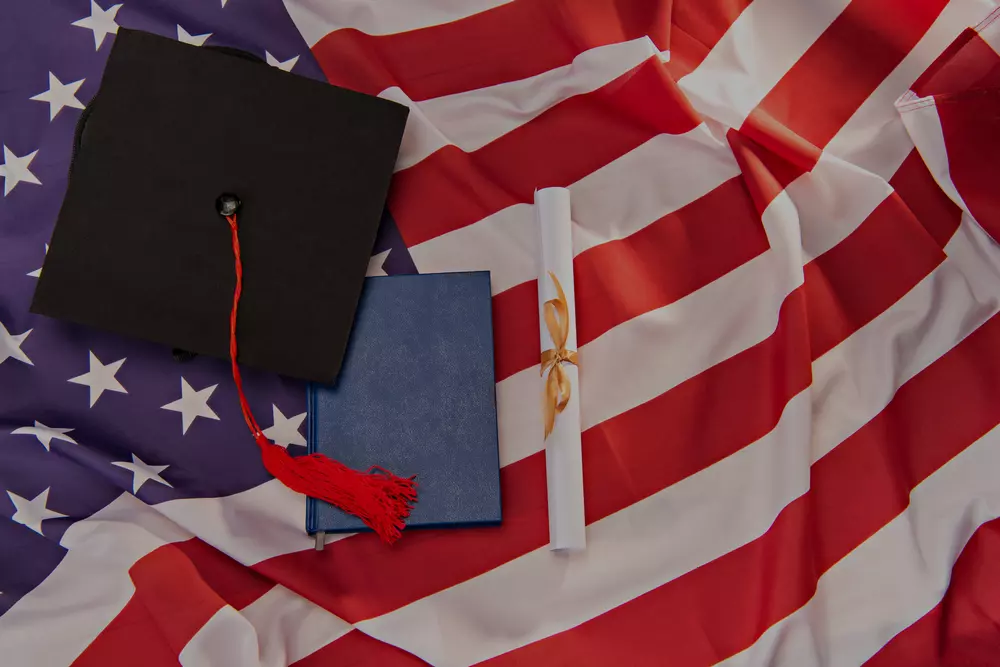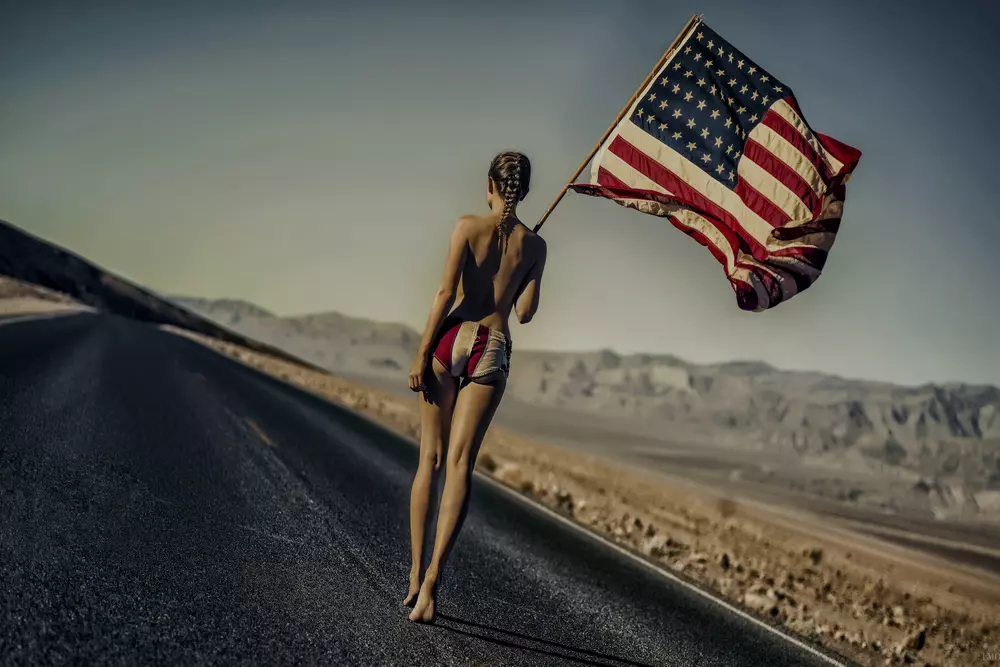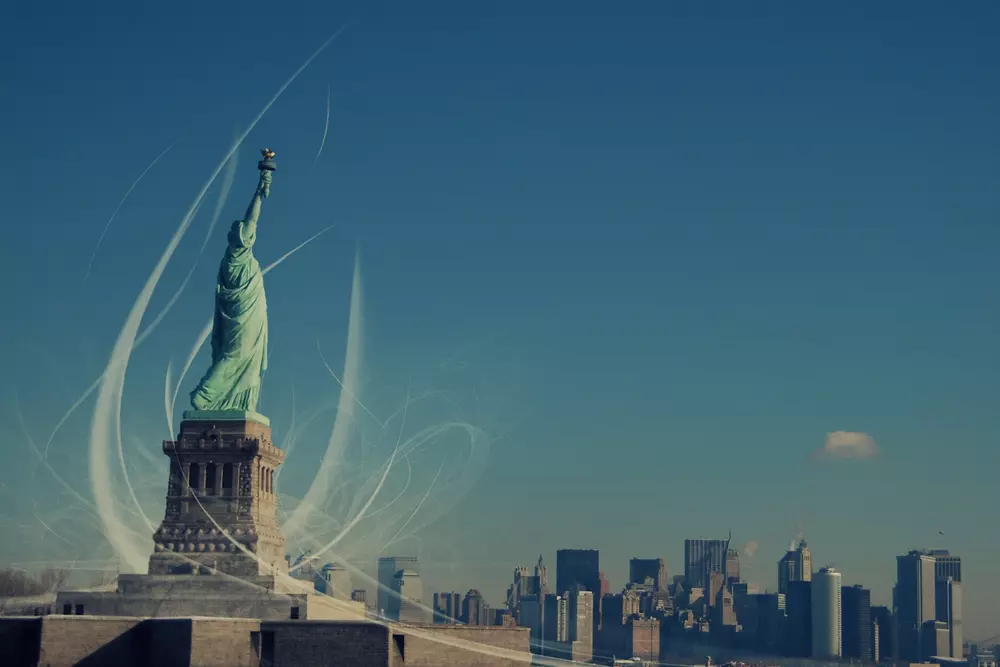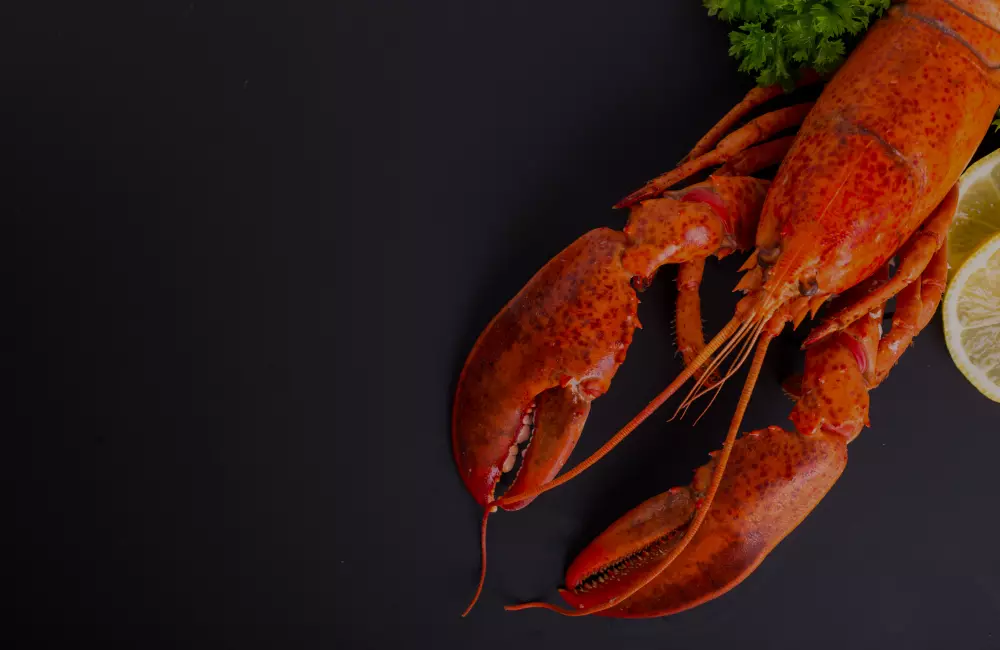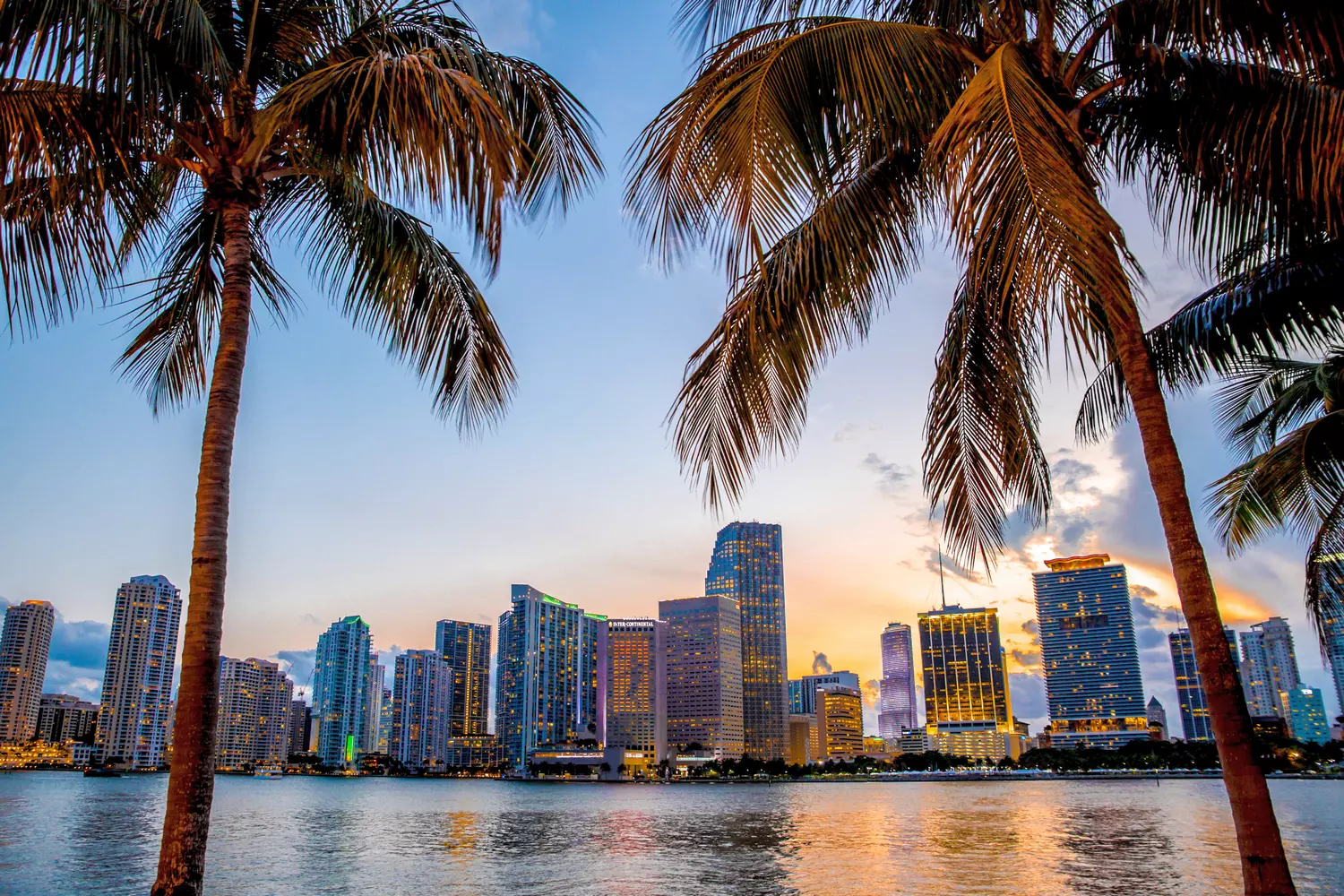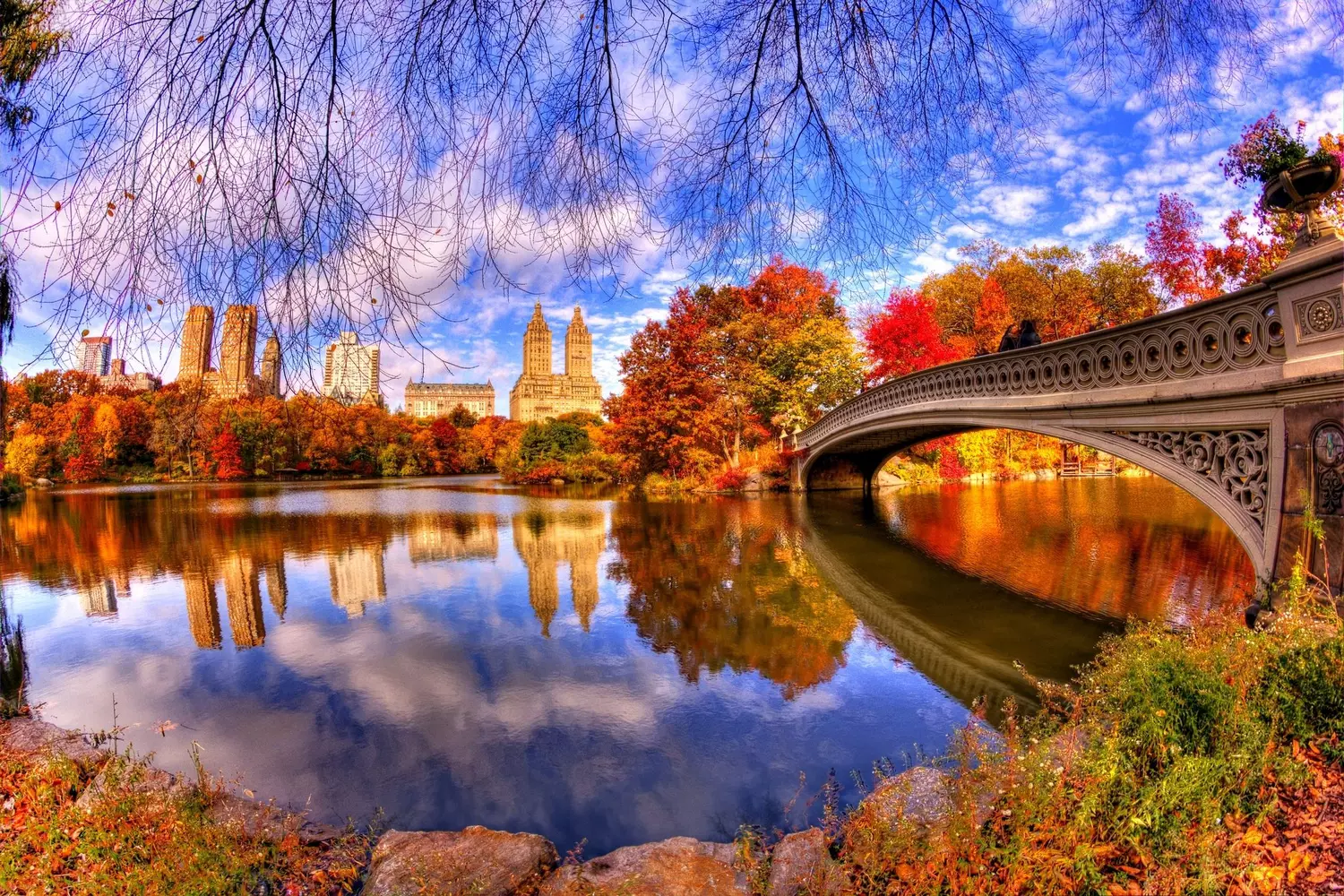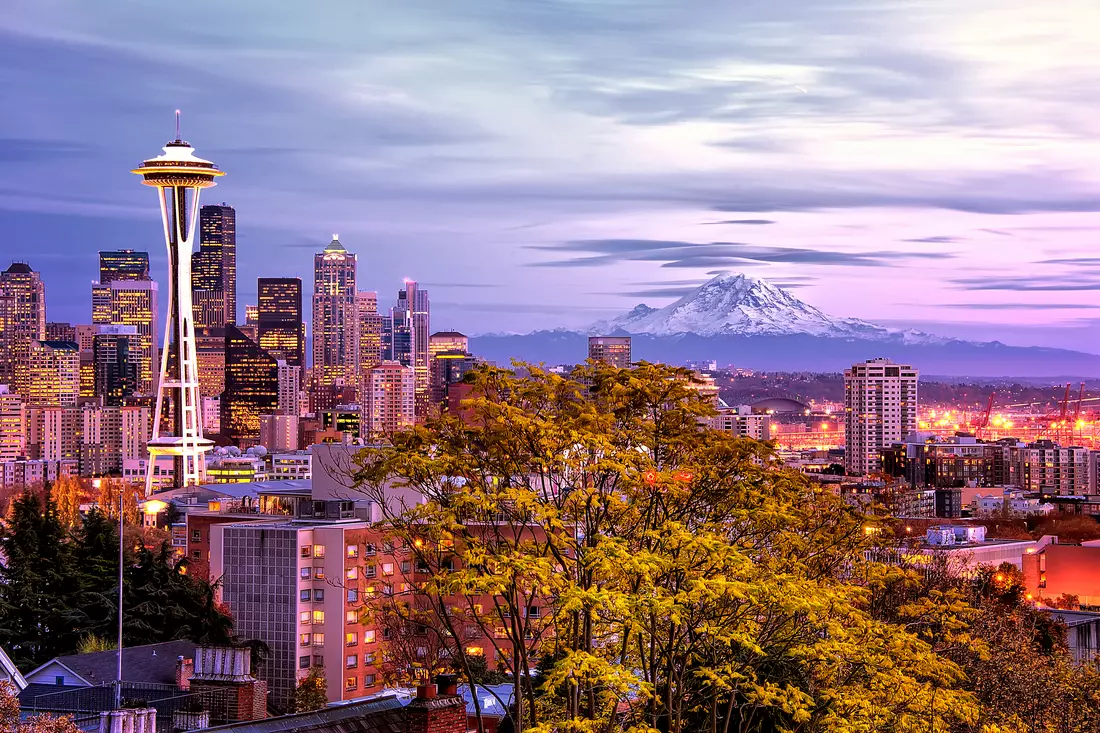When we hear the word "pirates", our imagination conjures black flags with skulls and crossbones, the roar of cannons, and the hoarse laughter of bearded sea marauders. Pages from Stevenson's novels, scenes from the Pirates of the Caribbean films, and childhood dreams of treasure chests filled with gold come to mind. But few stop to consider: what connection did pirates have with the USA? And here, the story is full of surprises.
American history is closely tied to the sea and its romance. The Atlantic coast became a gateway for settlers, trading caravans, and war frigates. But it was also a stage for constant battles over power and wealth. England, Spain, France, and the Netherlands fought for influence in the New World, and pirates occupied that very "gray area" where politics, smuggling, and adventure intertwined.
Legends worthy of the finest adventure novels were born off the coasts of Carolina, Florida, and Louisiana. Blackbeard, Jean Lafitte, José Gaspar — these names are woven into the history of the USA just as deeply as the Founding Fathers. They lived outside the law, yet sometimes influenced the fate of entire cities, and occasionally even the outcomes of military battles.
Today, the pirate theme in the USA is not only part of school textbooks but also a living culture. In New Orleans, you can walk the streets where Jean Lafitte conducted his dark dealings; in North Carolina, see artifacts from Blackbeard's ship; in Florida, witness the grand pirate festival Gasparilla. America's pirate heritage lives on in museums, festivals, reenactments, and even tours, where you can experience the thrill of those very maritime adventures.
Pirate America is not a myth or a legend. It is a reality that has left a vivid mark on the country’s history and continues to attract millions of tourists.
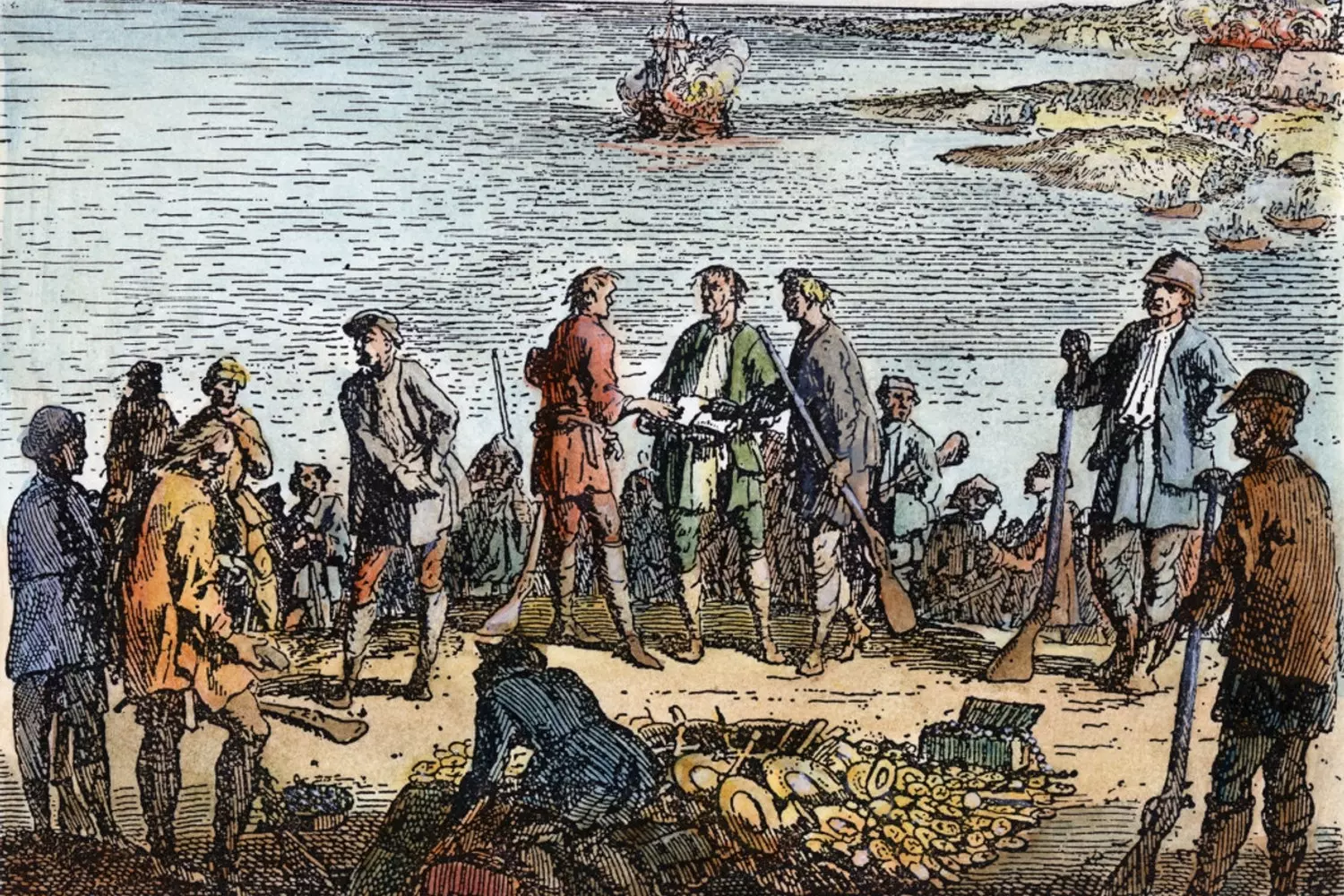
In 1996, American researchers discovered the Queen Anne’s Revenge — Blackbeard’s flagship — off the coast of North Carolina. The recovered artifacts are still being studied by scientists, and some can be seen in museums.
The Golden Age of Piracy, American Style: from the Thirteen Colonies to the First Privateering War
When historians talk about the "Golden Age of Piracy", they usually refer to the period from the late 17th to the early 18th century. During this time, sea marauders became a real force in the Atlantic and the Caribbean, and their influence on the fate of the colonies that would become the USA is hard to overestimate.
- 01. Pirate Havens on the Coast
The thirteen English colonies scattered along the Atlantic coast lacked a strong navy and centralized authority. For pirates, this was an ideal environment:
- Secluded bays became hiding places for ships;
- Fishing villages served as supply points;
- And local merchants often purchased the "loot" from pirate raids.
South Carolina, and especially Charleston, were places where semi-legal trade thrived. Pirates felt almost at home there.
- 02. Pirates or Privateers?
It’s important to remember that not everyone called a pirate was a criminal in the usual sense. Many acted as privateers — individuals licensed by the government to capture enemy ships.
- England, Spain, and France actively employed privateers during their wars.
- For the young American coast, this was a cheap way to defend themselves and also a source of income.
- However, the line between a "legitimate privateer" and an "illegal pirate" was often blurred: the same captain might serve the crown one year and operate on his own account the next.
- 03. The Atlantic as a Battlefield
The period from the 1650s to the 1730s saw the Atlantic teeming with pirate attacks. Ships loaded with gold, sugar, tobacco, and rum sailed from the Caribbean to Europe — and it was there that pirates found rich prizes. They were especially active off the coasts of:
- North Carolina, where Blackbeard later became famous;
- Florida, through which Spanish galleons passed;
- New England, where pirate ships occasionally even entered Boston and Rhode Island.
- 04. The First Privateering War
The true "official" emergence of pirates in American history came later — during the War of Independence. But the precursor was the War of Queen Anne (1702–1713), known in the colonies as the first major privateering campaign.
- England and Spain fought in Europe and at sea.
- In the American colonies, pirates and privateers helped attack Spanish ships, filling their pockets while simultaneously "serving the crown".
- It was during this period that many legendary captains, like Blackbeard, began their careers.
- 05. Legends and Shadows
The Golden Age of Piracy ended as swiftly as it began. With the strengthening of the British fleet and authority, and later that of young America, pirates became inconvenient allies. By the mid-18th century, piracy along the American coast had almost disappeared. Yet the myth of free-spirited captains and hidden treasures lived on.
The pirate history of the USA is not just about romance, but also a part of the country’s formation. Pirates were both enemies and allies, and symbols of the very freedom that continues to captivate tourists today.
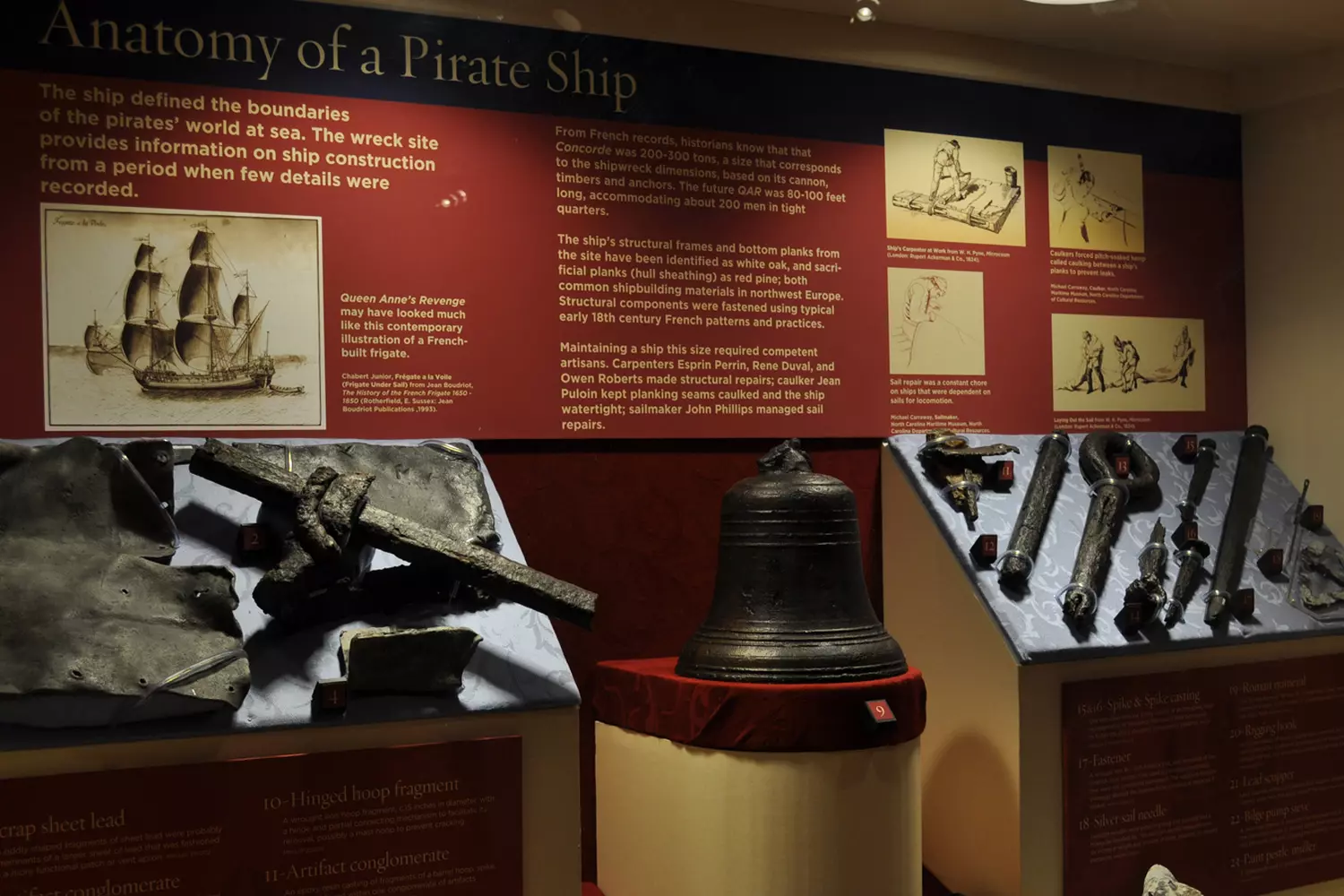
Patriots and Pirates: How Privateers Helped the United States Win Independence
When people talk about the American Revolution, they usually think of George Washington, the Declaration of Independence, and battles on land. But there is a less obvious, yet crucial, aspect of the fight for freedom — the role of pirates and privateers. They were the ones who controlled the sea lanes, disrupted British army supplies, and brought a spirit of defiance closely aligned with the ethos of the young United States.
- 01. Who Were the Privateers and How They Differed from Pirates
In the 18th century, there was an important distinction: a pirate acted at his own risk, breaking all laws. A privateer, however, was a kind of "official pirate". They received a special government license — a letter of marque — which legalized the capture of enemy ships.
For the USA, which at the start of the War of Independence had virtually no navy, privateers were a real boon. Thousands of sailors accustomed to living on the edge of the law became legitimate warriors and joined the fight on the side of the patriots. - 02. Naval Warfare Without a Fleet
In 1775, the American colonies had almost no warships. The British Navy, by contrast, was one of the strongest in the world. This is where the experience of pirates proved invaluable. Hundreds of privately owned vessels were converted for combat duties. Crews skilled in boarding actions and naval skirmishes eagerly signed privateer commissions.
These ships attacked British merchant vessels, seized their cargo, and the proceeds were divided between the crew and the revolutionary treasury. It was a symbiotic relationship: patriotism reinforced by personal gain. - 03. An Economic Blow to Britain
Historians note that privateers inflicted arguably more damage on the British economy than the regular American army. During the war, they captured around 600 British merchant ships. This not only disrupted troop supplies in America but also deprived Britain of revenue, causing discontent among merchants and industrialists in London. One contemporary wrote: "American privateers were a scourge to English trade and a hope for the colonies." - 04. Pirate Boldness and Patriotic Spirit
Many well-known pirates and adventurers of the 18th century found their place in the War of Independence. Their habit of taking risks, audacity, and ability to act against superior forces proved invaluable. Where the regular navy could not respond, privateers relied on cunning and speed.
They not only captured ships but also brought essential goods to the colonies — weapons, gunpowder, and medicine. Under blockade conditions, this was literally a matter of survival.
Fun fact: Benjamin Franklin, while serving as a diplomat in France, actively supported privateers. Moreover, he suggested using them as a means of applying pressure on Britain during negotiations. In this way, pirate tactics became part of a larger diplomatic game.
Privateers and corsairs were not merely outlaws with skull-and-crossbones flags. In American history, they are counted among those whose daring, courage, and thirst for freedom helped a new nation emerge. Their contribution is a reminder that independence was won not only on the battlefield but also on the high seas, filled with cries of "Avast, boarders!"
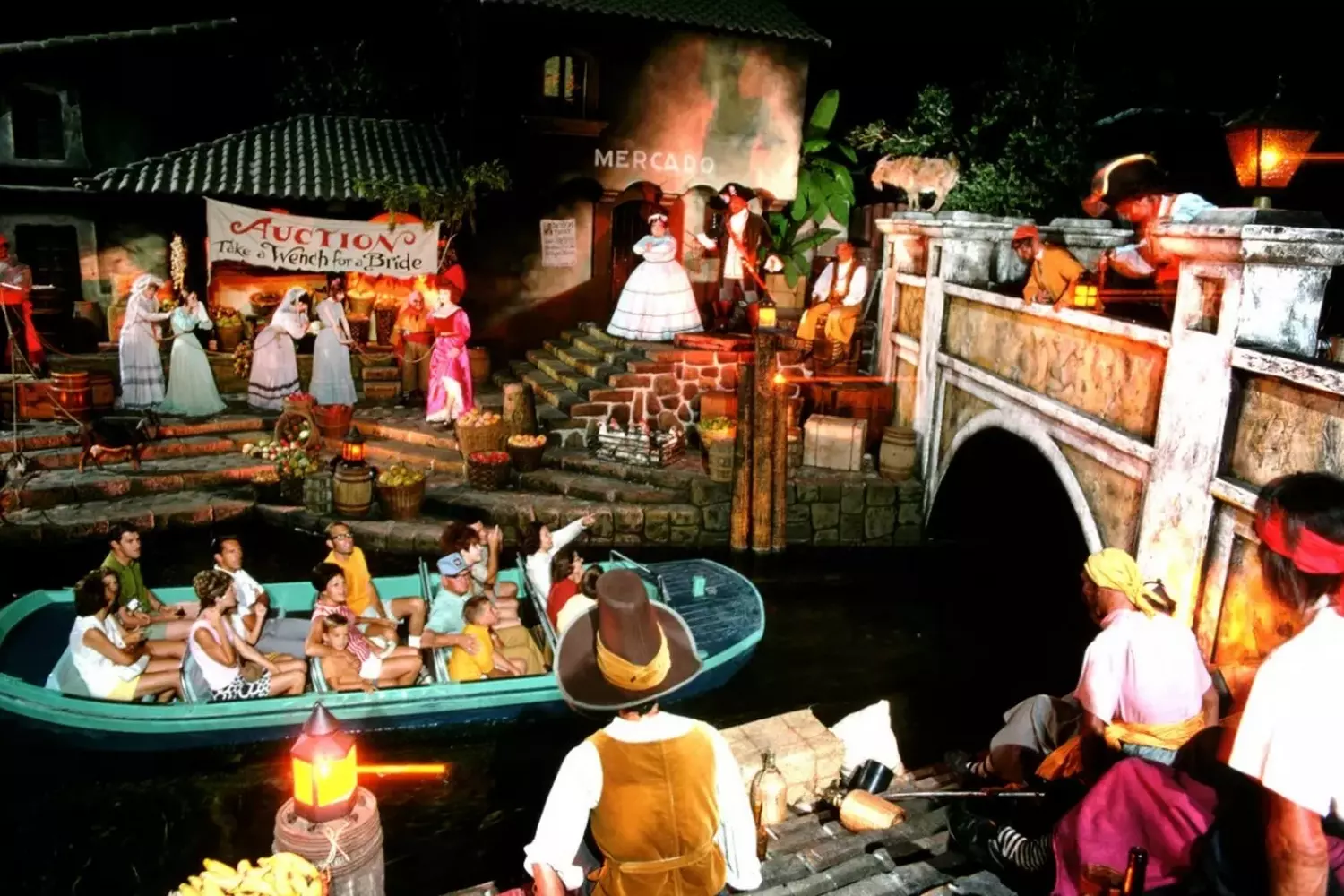
Jefferson vs. the Pirates: How the First American Fleet Ended the Threat off the Coast
When the United States finally gained independence in 1783, it seemed that only growth and prosperity lay ahead. But soon the young republic faced an unexpected enemy — pirates. This was the first war the USA fought after gaining freedom. Surprisingly, victory did not come: America lost its first naval conflict.
- 01. Barbaric Shores and a New Threat
After breaking away from Britain, the USA was no longer protected by the Royal Navy. American ships were left defenseless on the open sea. Off the coast of North Africa, along the so-called Barbary Coast (modern-day Algeria, Tunisia, Tripoli, and Morocco), formidable Barbary pirates thrived.
These sea raiders had for centuries captured ships, plundered cargo, and engaged in the slave trade. European powers preferred to pay them tribute so their merchant ships could safely navigate the Mediterranean. The young USA knew nothing of this “tradition” — and became easy prey. - 02. Captivity and Humiliation
In 1785, Barbary pirates captured two American vessels, taking crews of more than 20 men into slavery. This shocked the public: yesterday’s heroes of independence were helpless before maritime bandits.
In the following years, the situation worsened: American ships were seized one after another. North African slave markets were filled with sailors from “free” America, and the government was forced to negotiate ransoms. - 03. The USA Pays Tribute
Without a navy or the means to resist, America followed the path European powers had taken before: paying tribute to pirates. By the late 1790s, more than 20% of the federal budget went to bribery and “peace treaties” with the Barbary states. For a young nation just finding its footing, this was humiliating and extremely burdensome.
Benjamin Franklin bitterly remarked:
“Those who were ready to die for freedom are now forced to pay so they won’t be sold into slavery.”
After this humiliating defeat at the Barbary Coast, the USA learned a simple truth: freedom and security at sea require a strong navy. This lesson became the catalyst for creating the first regular American fleet — the tool through which the country could actively confront the pirate threat for the first time. The main architect of this maritime retribution was Thomas Jefferson, the third President of the USA.
- 01. Creating the Navy: First Steps
In 1794, the U.S. Congress made the historic decision to build six frigates — light, fast, and well-armed ships capable of confronting pirates. Among them were the famous USS United States, USS Constitution, and USS Constellation. These frigates became the first permanent naval force of the USA. They enabled:
- Protection of American trade routes;
- Conducting combat operations along the North African coast;
- Recovering captured ships and crews.
- 02. First Successes of the Fleet
In 1801, when Thomas Jefferson was already President, the First Barbary War broke out. The pirate states of Tripoli began attacking American ships, demanding new payments. The American fleet acted decisively:
- Patrolling coasts and escorting merchant ships;
- Direct attacks on pirate bases and fortresses;
- Supporting diplomatic missions when the threat was reduced, but negotiations remained necessary.
These actions demonstrated for the first time that the USA could protect its interests overseas without relying on European powers.
- 03. The Role of Jefferson
President Jefferson practiced a moderate foreign policy, but showed firmness regarding pirates. He refused to pay new ransoms, emphasizing the principle: “We will never again be hostages to the greed of others.”
- Jefferson personally oversaw the construction of the fleet and allocation of resources;
- He applied a combination of diplomacy and force to compel the Barbary states to sign favorable treaties;
- Under his leadership, the American navy achieved its first victories over pirates, recovering captured ships and crews.
- 04. Victory of the Navy and Lessons for the Nation
The First Barbary War (1801–1805) showed that naval strength is not a luxury, but a necessity. Pirates could no longer threaten American interests with impunity. Thanks to the fleet’s actions and Jefferson’s determination:
- The USA stopped paying regular tribute to pirates;
- Trade routes in the Mediterranean were secured;
- The young republic asserted itself as a maritime power for the first time.
Fun fact: The USS Constitution, one of the first American frigates, was nicknamed “Old Ironsides” because pirate cannonballs could not penetrate its thick hull. This ship not only fought pirates but became a symbol of the strength and independence of the U.S. Navy — and today remains afloat as a historic museum.
Jefferson’s victory over the pirate threat was a milestone: it not only secured trade routes but also laid the foundation for the American naval tradition. It was then that the USA first proved it could defend its interests through strength, not just diplomacy or ransom payments.
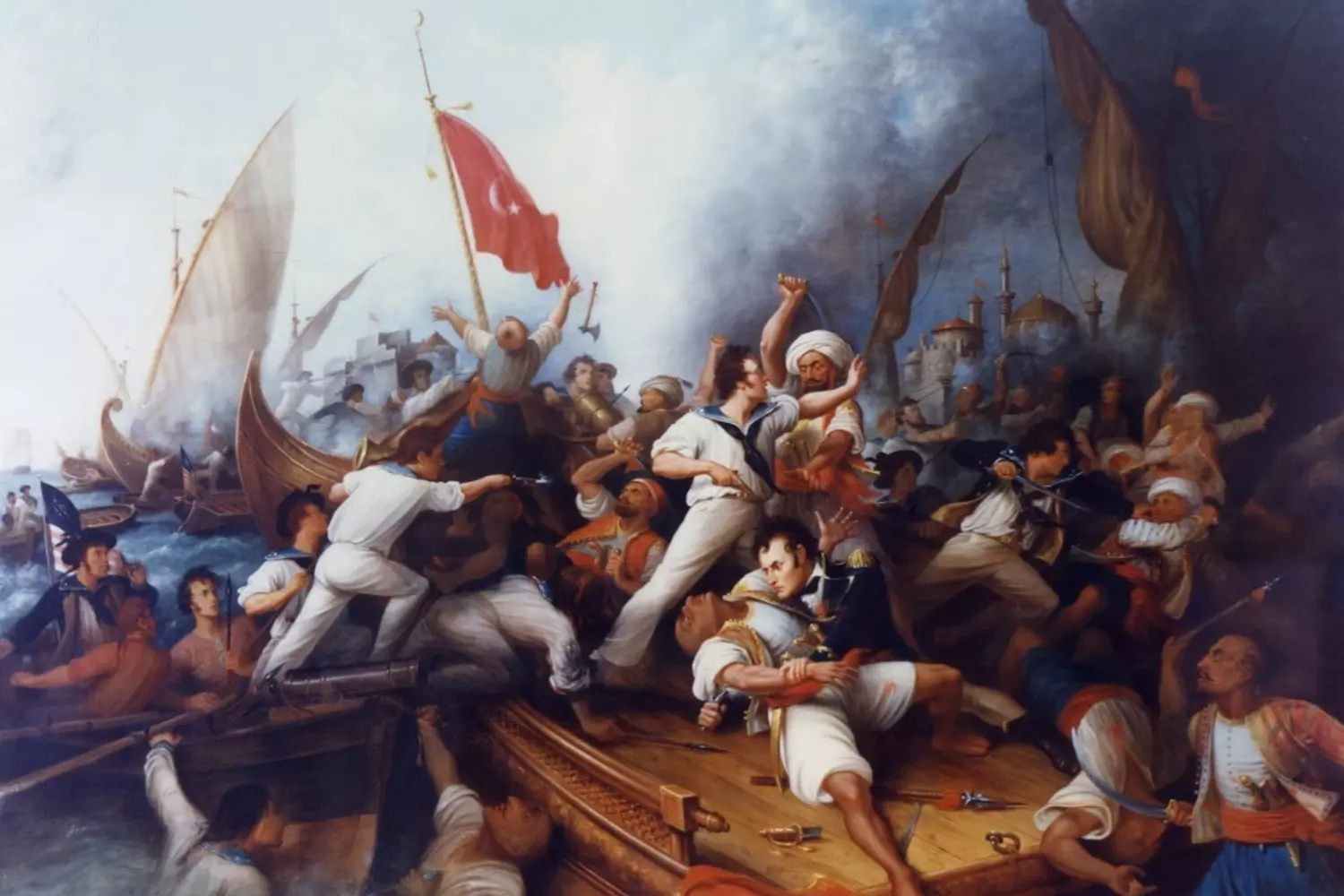
Pirate Strongholds in the USA: From Boston Taverns to the Bays of Carolina
Pirates in America did not live only on the high seas — they had their own "headquarters", hidden bases, and secret hideouts on land. These places served as unofficial centers for trade, leisure, and planning attacks on merchant ships. Today, they are remembered through historic buildings, museums, and legends, but in the 18th century they were true "pirate enclaves", governed by their own rules and order.
- 01. Boston Taverns: The Heart of the Pirate Underground
Although Boston was one of the largest and most strictly controlled ports, it was here that pirates found safe haven in taverns and inns along the waterfront.
- Taverns served as meeting places for captains and crews.
- Plans for attacks were discussed, and maps and intelligence on merchant convoys were exchanged.
- Often, taverns became centers of espionage: captains gathered information on the movements of British and Dutch ships.
Interestingly, some establishments became so famous among seafarers that the term “Boston tavern” became a symbol of the pirate underground — both in literature and oral tradition.
- 02. Carolina Bays: Shelter for the Bold and Swift
The southern coast — especially North and South Carolina — was considered ideal for secret anchorages. Pirate bases were established deep within bays, hidden from the eyes of the authorities:
- Ocracoke was known as Blackbeard’s refuge. Locals spoke of his ships appearing and disappearing like shadows.
- Sandy shoals and mangrove thickets made the bays difficult for British patrols to access.
- Pirates used these bases for ship repairs, storing plunder, and preparing for new raids.
The Carolina bays were not just hideouts, but a kind of "feast of freedom": they had their own rules, and armed crews ensured control over the territory.
- 03. New Orleans and Louisiana Bases
In the south, around New Orleans and the coast of Louisiana, pirate bases combined maritime and land infrastructure. They included:
- Warehouses for weapons and supplies;
- Secret docks for ships;
- Bars and taverns where sea adventurers met.
The bases of Jean Lafitte were especially famous. He not only engaged in smuggling and piracy but also maintained connections with American patriots. From his bases, Lafitte supplied weapons to troops fighting for independence.
- 04. Secret Networks and Intelligence
Pirate bases in the USA were not just logistics hubs. They were centers of information:
- Guides and coastal lookouts relayed intelligence about merchant ship movements.
- Some tavern owners acted as intermediaries between pirates and legitimate traders.
- Smuggling channels allowed crews to be supplied with provisions, ammunition, and even weapons for patriots.
Thus, each base was a small world with its own rules, economy, and survival strategy.
Fun fact: Some bases continued to operate even after U.S. naval forces grew stronger. Legends speak of secret "pirate apartments" and underground warehouses in the old ports of Boston, Charleston, and New Orleans, where loot storage and exchange continued for decades.
Pirate bases in the USA are a vivid reminder that maritime piracy in America was not only the business of a single captain and his crew, but an entire infrastructure carefully hidden from the authorities.
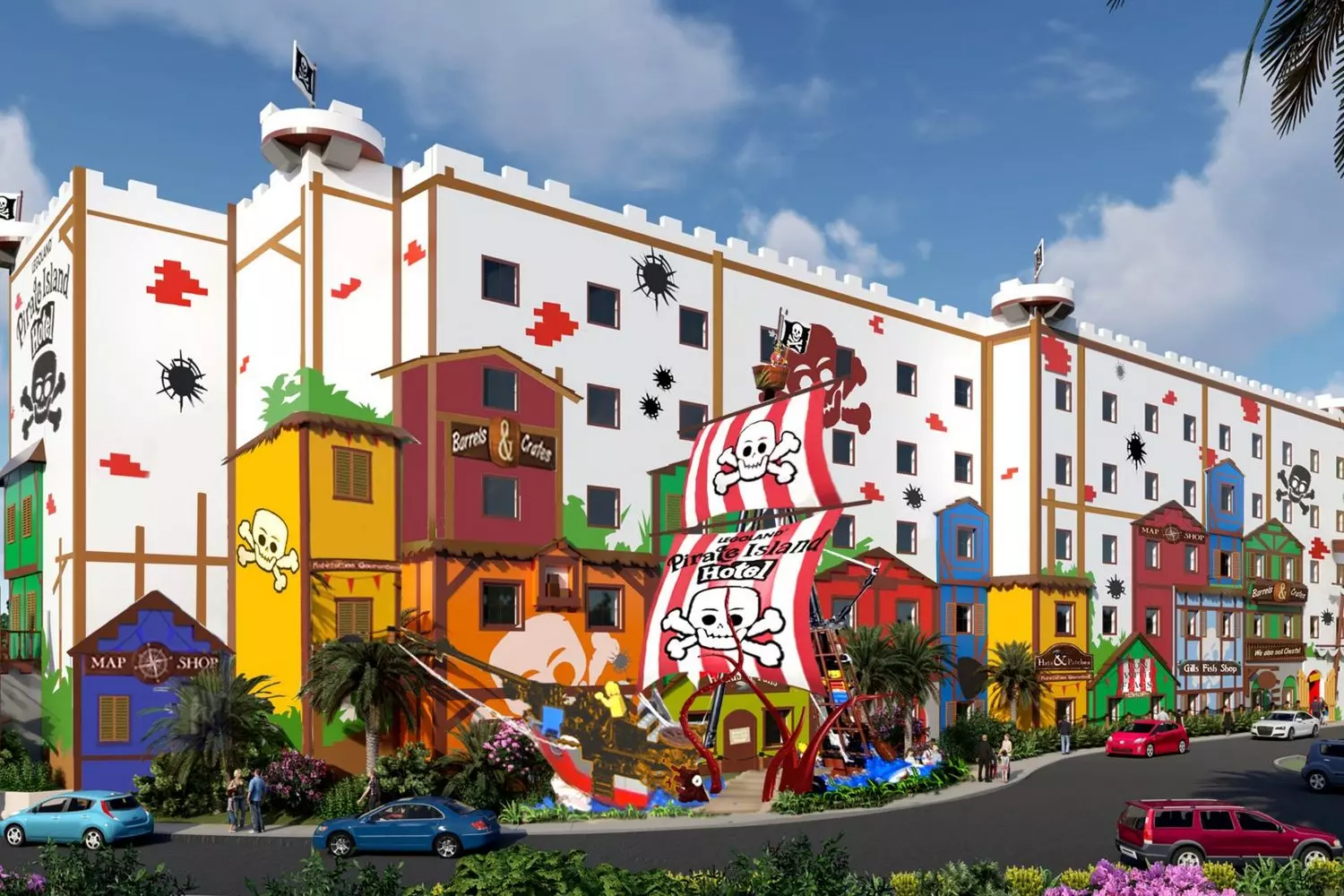
Blackbeard: A Symbol of Fear and a Carolina Legend
When people talk about pirates in America, the name Edward Teach, better known as Blackbeard, evokes both fear and admiration. This pirate became a true legend of the 18th century, whose raids, audacity, and terrifying image entered the maritime history and folklore of North Carolina.
- 01. The Path to Piracy: From England to the New World
Edward Teach was born in England in the late 17th century. Little is known about his early years, but by the early 18th century he had moved to the colonies of the New World, quickly establishing himself in the world of pirates and privateers.
- At first, he served on the ships of private captains and took part in legal and semi-legal raids.
- Gradually, Teach gained a reputation as a skilled and ruthless sailor, capable of capturing even well-armed vessels.
- The New World offered ideal conditions for his activities: an extensive Atlantic coastline, numerous bays, and lightly protected trade routes.
- 02. North Carolina Shores: Favorite Arena for Raids
A special place in his career was the coast of North Carolina. Mangrove inlets, isolated bays, and abundant merchant shipping made this region a true pirate paradise.
- It was here that Blackbeard conducted his famous boardings, seizing ships with goods and gold.
- He skillfully used the terrain, hiding his ships in shoals and mangroves, allowing him to strike suddenly and vanish just as quickly.
- To locals, his name became both a symbol of threat and fascination: legends of his exploits spread across towns and ports.
- 03. The Terrifying Image: Psychological Weapon
Blackbeard was not only a clever strategist but also a master of intimidation. His signature style included:
- A black beard woven with burning fuses, creating a terrifying sight in the smoke of battle, like a demon from the sea.
- The use of cigars and fuses to make his figure look menacing even from a distance.
- Creating a myth of his own invulnerability, which psychologically affected enemy crews: many surrendered without a fight.
This tactic made him not only a formidable pirate physically but also a magnetic leader, able to command fear and respect among his subordinates.
- 04. The End of the Legend: Battle with the Virginia Fleet
In 1718, the authorities of Virginia decided to put an end to his reign of terror. The fleet engaged him in a fierce battle:
- Blackbeard fought bravely, receiving 20 wounds and five gunshot injuries before he fell.
- His death became legendary — his head was displayed on the ship’s bow as a warning to other pirates.
- This moment cemented his name in history as a symbol of maritime audacity and cruelty.
- 05. Legacy and Memory
Even three centuries later, Blackbeard remains part of American maritime mythology:
- Annual festivals in North Carolina honor him, featuring reenacted battles, costume parades, and performances.
- Regional museums preserve artifacts recovered from the ship Queen Anne’s Revenge, including weapons, personal pirate belongings, and maps.
- His story inspires books, films, and video games, and his name has become a symbol of untamed freedom and audacity.
Fun fact: It is believed that Blackbeard never lost in a real naval battle. All his defeats were due to being outmaneuvered or betrayed, not from a lack of skill or courage. This fact makes his legend even more vivid and appealing to researchers and tourists.
Blackbeard is not just a pirate, but an entire era that left its mark on the culture, history, and maritime traditions of the USA. His legacy lives on in museums, festivals, and legends, inviting everyone to experience the spirit of true pirate America.
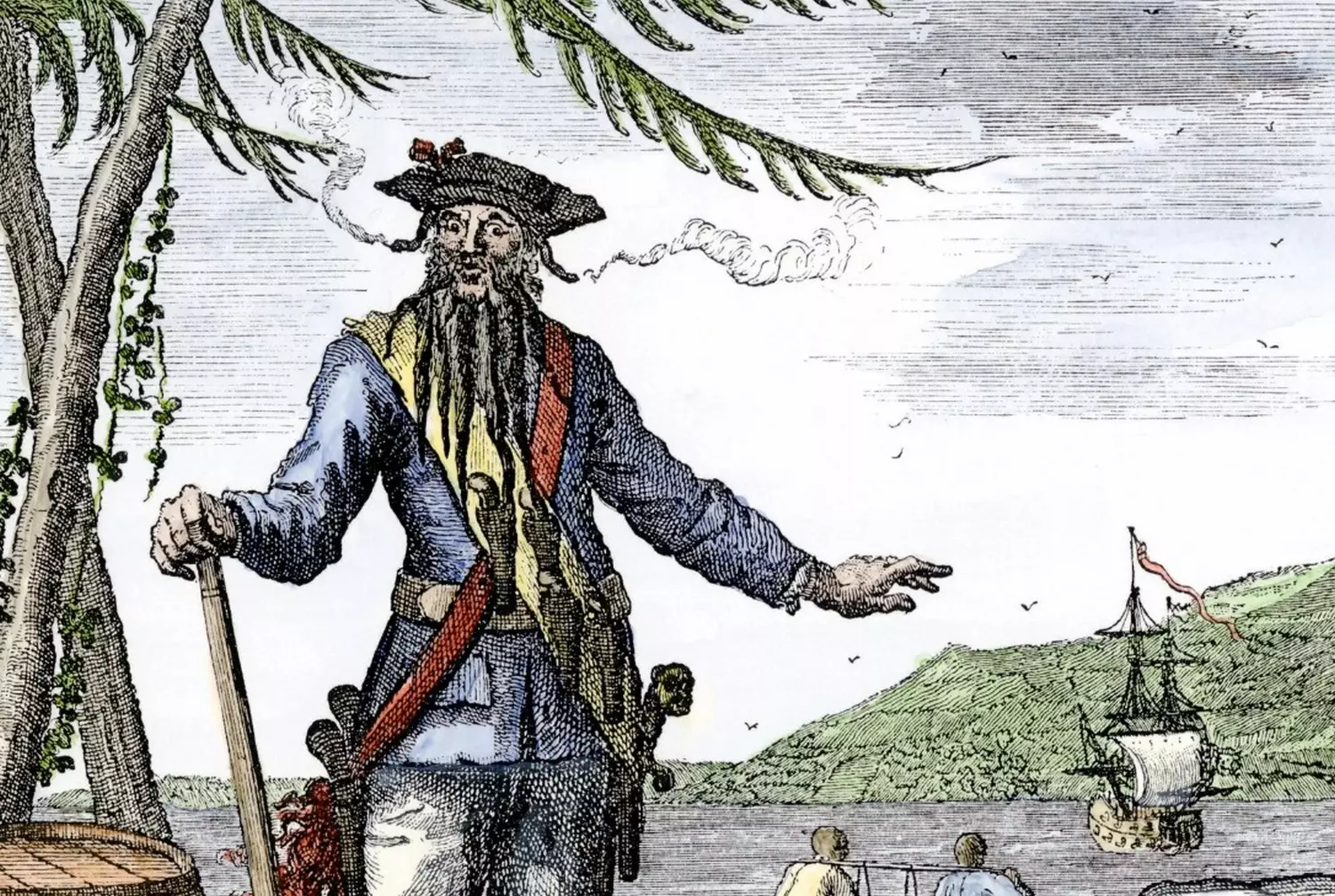
Jean Lafitte: Pirate, Smuggler, and Secret Defender of the United States
The name Jean Lafitte resonates in American history as loudly as Blackbeard’s, but with one unique feature: Lafitte was not only a pirate and smuggler, but also a true patriot who defended the USA at a critical moment. His life and deeds are shrouded in legend, and modern New Orleans preserves his memory on every street of the French Quarter.
- 01. The Roots of a Pirate’s Fate: French Beginnings
Jean Lafitte was born in France at the end of the 18th century. Like many maritime adventurers of his time, he moved to the New World, quickly mastering the world of trade, smuggling, and maritime raids.
- The main arena of his activity was the Gulf of Mexico, rich in trade routes and poorly protected.
- Lafitte quickly realized it was more profitable to act skillfully, combining smuggling, piracy, and extortion, than relying solely on robbery.
- His charisma and ability to manage people made him the leader of a small but extremely effective team of pirates and smugglers.
- 02. New Orleans: Pirate Capital
At the beginning of the 19th century, Lafitte settled in New Orleans, establishing a base that became not just a pirate hideout, but a city within a city:
- It housed warehouses with contraband goods, secret docks, and workshops for ship repairs.
- His crew controlled the trade of spirits, weapons, and textiles, generating huge profits.
- Lafitte’s bars and taverns became centers of information: sailors, merchants, and adventurers gathered there, exchanging news and rumors about merchant ship movements.
Lafitte skillfully navigated between legal and illegal activities, allowing him to build influence and ensure the safety of his operations even under strict government control.
- 03. Hero or Pirate? The Battle of New Orleans
Jean Lafitte’s story took a dramatic turn in 1814, when Britain attempted to capture New Orleans. Lafitte unexpectedly sided with the Americans:
- He offered General Andrew Jackson his forces and knowledge of the terrain.
- Lafitte’s pirates helped strengthen the city’s defenses, supplying troops with weapons and ammunition.
- Their accurate fire from the shores and skill in combat played a key role in defeating the British army.
Thus, Lafitte transformed from a “sea robber” into a national hero, proving that pirates could be defenders of freedom when circumstances demanded.
- 04. The Legacy of Jean Lafitte
Today, Lafitte’s memory lives not only in history but also in the culture of New Orleans:
- Jean Lafitte National Historical Park preserves the buildings, warehouses, and docks where he once operated.
- Museums offer exhibits detailing pirate operations, smuggling, and maritime life of the early 19th century.
- The French Quarter, with its narrow streets, bars, and taverns, allows tourists to immerse themselves in the atmosphere of a “pirate city”.
- Some bars and restaurants bear Lafitte’s name, offering themed tastings and shows related to his era.
Fun fact: Lafitte knew how to lead a double life: he was simultaneously a pirate, smuggler, and agent of the American government. Legends say that many British officers were puzzled: “How can one man be both enemy and ally at the same time?” This talent for diplomacy and cunning made Lafitte a unique figure in the history of piracy.
Jean Lafitte is an example of how piracy and patriotism could go hand in hand. His courage, business acumen, and maritime skill made him not only a Louisiana legend but also a symbol of American ingenuity and audacity.

Stede Bonnet: The Gentleman Pirate Who Traded Plantations for a Life of Piracy
When you hear the word “pirate,” images of ruthless sailors and fearless adventurers usually come to mind. But Stede Bonnet is a completely different case: a gentleman with plantations who decided to become a pirate. His life is an extraordinary mix of wealth, daring, and tragedy, leaving a vivid mark in the history of Caribbean and Atlantic piracy.
- 01. The Path to Piracy: From Plantations to the Pirate Flag
Stede Bonnet was born in 1688 in South Carolina to a wealthy planter family. He received a good education, knew how to manage estates, and was respected in society. His future seemed set: wealth, land, a comfortable life. But something inside Bonnet drew him to the freedom of the sea:
- In 1717, already an adult, he bought a small ship and converted it into a pirate vessel named Revenge.
- Bonnet had no experience in maritime robbery but was determined to experience the life of a true pirate.
- He hired a crew, mostly experienced sailors and former pirates, to compensate for his lack of skills.
This move made him a unique figure: a gentleman pirate who traded the calm life of a planter for the dangers and adventures of the sea.
- 02. Sea Adventures and Style
Bonnet was known for his unusual approach to piracy:
- He preferred democratic methods of managing his crew, which was rare among pirates: decisions were made collectively, and loot was shared equally.
- His raids were moderately successful but often limited to small captures of merchant ships.
- Bonnet tried to combine honesty and gallantry with pirate life, making him a legend among sailors and somewhat a “sunny pirate” — without excessive cruelty.
However, his inexperience often led to problems. Interactions with more seasoned pirates, such as Blackbeard, did not always go smoothly. Sometimes his “gentlemanly style” hindered achieving strategic goals that required decisiveness and toughness.
- 03. The End of a Legend: Capture and Execution
In 1718, Stede Bonnet was ambushed off the coast of Florida.
- His ship was seized by British authorities.
- Bonnet was arrested, charged with piracy, and soon sentenced to death.
- In 1718, he was hanged in Charleston, leaving behind a story of how wealth and status could not protect one from the dangers of a maritime life.
- 04. The Legacy of Stede Bonnet
Although his career was brief, it left a significant mark on the culture of piracy in the US:
- He became a symbol that one could become a pirate not only out of poverty or necessity but by choice, for freedom and adventure.
- Stories of the “gentleman pirate” entered literature and folklore, inspiring writers, filmmakers, and historians.
- In Carolina and Florida, his name is often mentioned on themed tours and festivals, telling the story of an unusual man who chose danger over comfort.
Fun fact: Despite his tragic end, Bonnet left behind an unusual journal and records of his activities. They show that he planned his raids as business ventures, considering loot a means to achieve independence rather than mere entertainment. This makes him a unique figure in US piracy history — a man who tried to combine gentlemanly manners with robbery.
Stede Bonnet is a living example of how the desire for freedom and adventure can change a person’s life. His story demonstrates that even a wealthy gentleman can leave luxurious plantations for the dangerous but enticing sea.
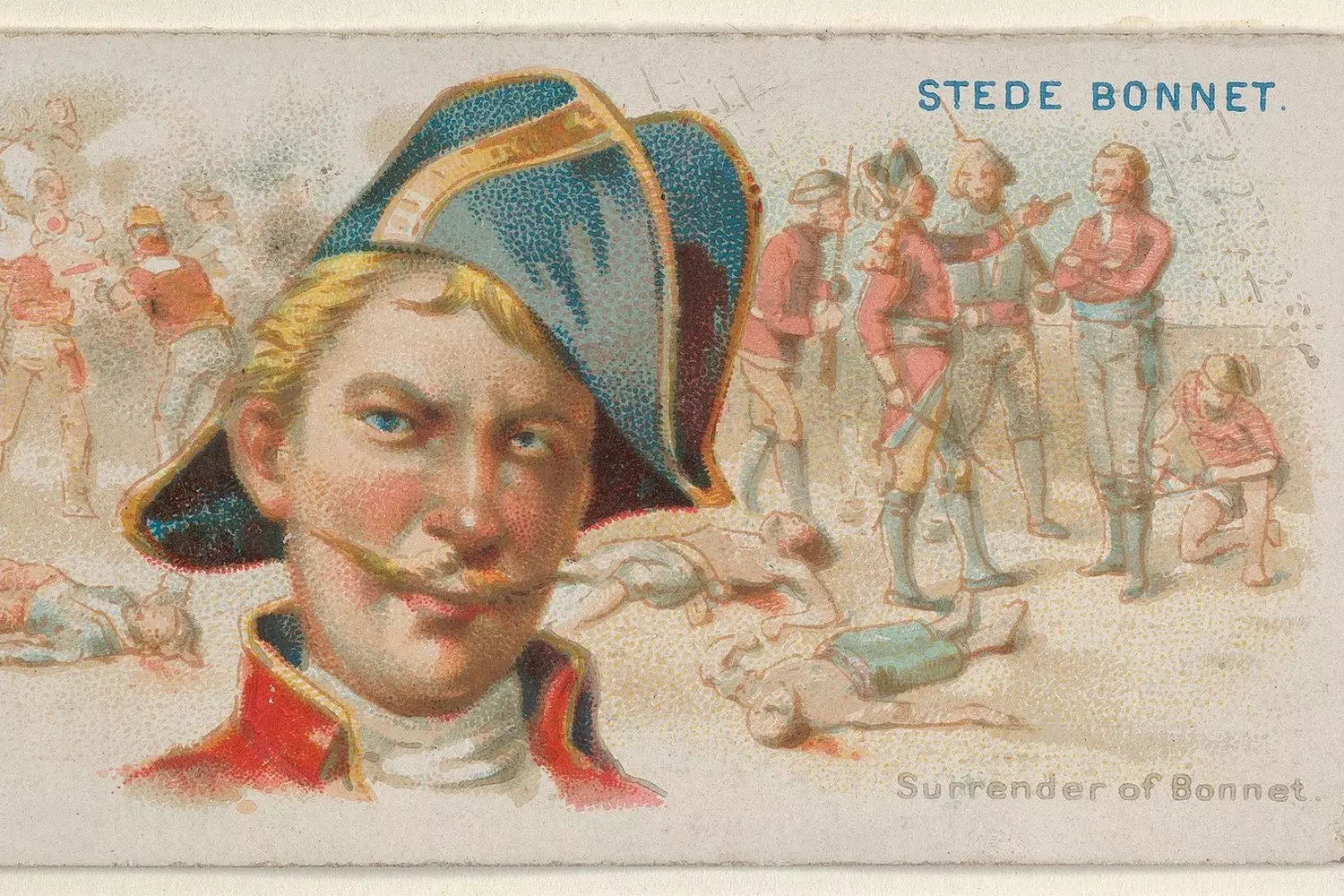
Captain Kidd: The Accidental Pirate Executed on Wall Street
The name William Kidd, known as Captain Kidd, still sparks debate among historians and fans of pirate lore. He is an example of how a single person can be drawn into piracy against their will and pay the ultimate price. His fate is connected not only with the sea but also with New York: Kidd’s execution on Wall Street became a symbol of the new American government’s determination to end piracy.
- 01. Early Years and Path to the Sea
William Kidd was born in Scotland in 1645, and as he grew up he was drawn to trade and maritime affairs:
- He served on various merchant ships, gaining experience in navigation and business management.
- In the 1690s, Kidd moved to the American colonies, where he began trading with the Caribbean islands and other colonies.
- He had a good reputation: he was considered an honest captain capable of defending his ships from pirates and capturing enemy vessels on behalf of the government.
It was this reputation that led to tragedy: the British government tasked him with hunting pirates and confiscating their ships, which later resulted in accusations against Kidd himself.
- 02. The Turn to Piracy: Chance or Forced Decision?
In 1695, Kidd received a privateer license to combat pirates and French enemies. However, circumstances led to him being accused of piracy:
- His crew seized several merchant ships, and part of the wealth was used by the captain to pay the crew and cover expenses.
- These actions were legally controversial: what was considered a private war against pirates was interpreted by many as robbery.
- Political intrigues and envy of competitors in England worsened the situation, turning Captain Kidd from a pirate hunter into a criminal.
- 03. Arrest, Trial, and Execution on Wall Street
In 1699, Kidd was arrested and taken to England for trial. Despite conflicting evidence, the court found him guilty of piracy and murder:
- He was executed in 1701 at Gallow’s Hill, near Wall Street in New York.
- The execution was a public demonstration of the government’s determination to suppress piracy along American shores.
- Kidd’s head was displayed on a pike, and his ships and treasures were confiscated.
- 04. The Legacy of Captain Kidd
Kidd’s story left a lasting impact on American culture:
- He became a symbol of how easily one can fall victim to circumstances and political intrigues, even while on the side of the law.
- Legends of Kidd’s hidden treasures inspired generations of treasure hunters and literary works about the search for wealth.
- In New York, his name became part of tourist routes: historic sites related to his execution and stories of legendary treasures attract visitors from around the world.
Fun fact: Some historians believe that Kidd was not a true pirate in the usual sense. His charges were largely political: the English crown wanted to demonstrate control over the American colonies and maritime trade. Today, Kidd is often called a “reluctant pirate,” a man who became a victim of his fate and his time.
Captain Kidd is the story of how the line between law and piracy can be blurred, and how a single person can become a symbol of both punishment and justice. His life reminds us of the dangers of the sea and the complex politics at the dawn of American history.
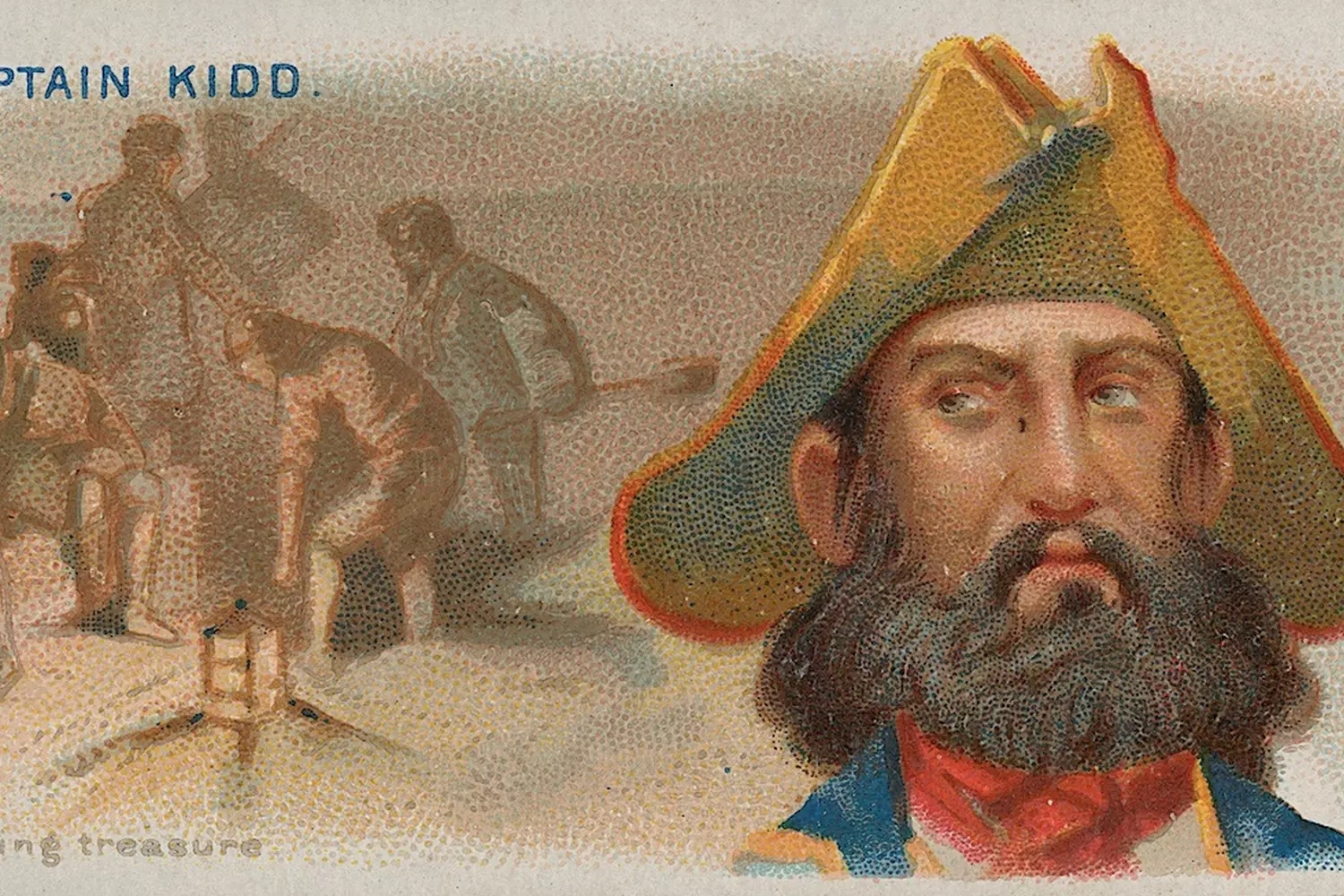
Pirates of Florida: From Caribbean Legends to Festival Fun
Florida has long been considered an ideal base for pirates. The straits, winding bays, and proximity to the rich trade routes of the Caribbean Sea made this region a true paradise for sea raiders. The history of piracy in Florida is not only about thrilling raids but also a cultural heritage that continues to be preserved today through festivals, museums, and legends.
- 01. Caribbean Galleons and Treasure Ships
In the 18th century, the coast of Florida was regularly visited by Spanish galleons transporting gold, silver, and precious jewels from the New World to Europe. These ships were a real prize for pirates:
- The galleons sailed along the coast, often without protection, making them vulnerable.
- Pirate crews used their knowledge of local straits and shallow waters to approach stealthily and seize the treasure.
- Local legends speak of hidden treasures that pirates concealed on islands and in the mangroves of Florida.
These stories still inspire treasure hunters and tourists eager to experience the romance of the sea.
- 02. Legendary Pirates of Florida
Florida became the arena for famous pirates:
- José Gaspar (Gaspar) — a mythical pirate whose legends of raids along the Florida coast live on today. It is said that he hid treasures in Tampa Bay and used clever traps to scare off treasure hunters.
- Pirate crews of Blackbeard and Jean Lafitte also left their mark on the coast, conducting raids and establishing secret bases.
These figures inspired folklore, popular culture, and modern celebrations, turning Florida’s pirate history into a living cultural tradition.
- 03. Gasparilla Pirate Festival: Modern Reincarnation of Piracy
One of the most vivid events dedicated to Florida pirates is the Gasparilla Pirate Festival in Tampa. This festival annually attracts hundreds of thousands of participants and tourists:
- Giant parades wind through the city streets, with residents and visitors dressed as pirates and sea raiders.
- “Pirate” ships symbolically “capture” the city on the bay, and spectators become participants in theatrical battles and adventures.
- The event features music, performances, fairs, and culinary shows, creating the atmosphere of a true pirate celebration.
The Gasparilla Festival combines historical elements with modern carnival spirit, turning Florida’s pirate history into a spectacular event for all ages.
- 04. Pirate Legacy in Florida’s Culture
Florida’s pirate stories are not only about festivals but also include:
- Museums and exhibitions displaying artifacts found along the coast and in the waters of the Gulf of Mexico.
- Themed ship tours where tourists can experience life as members of a pirate crew.
- Literature and films inspired by the daring and mysterious tales of Gaspar and other pirates.
Fun fact: It is believed that José Gaspar’s treasures have never been found. Each year during the Gasparilla Festival, symbolic “treasure hunts” are held, and many tourists try to solve the mysteries of the legendary pirate, adding an interactive element to the celebration.
Florida preserves the spirit of piracy: from historical raids and secret bases to vibrant festivals and cultural events. Here, past and present intertwine, inviting tourists to immerse themselves in the atmosphere of maritime daring and adventure.
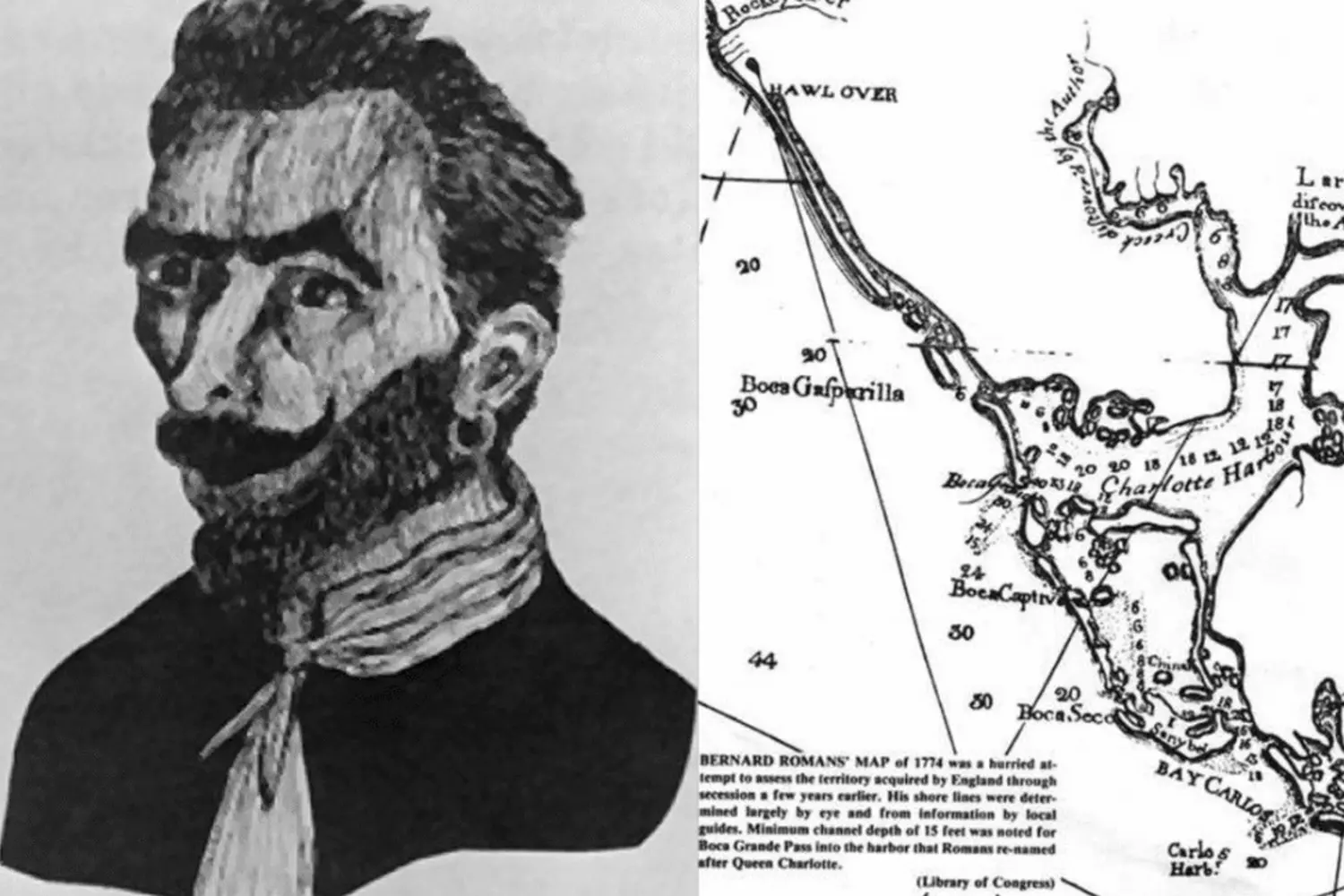
Women Pirates of America: Anne Bonny and Mary Read — from South Carolina to the Caribbean
When people think of pirates, images of bearded men with sabers and muskets usually come to mind. However, the history of piracy in America and the Caribbean also includes women whose names became legendary, no less than Blackbeard or Jean Lafitte. Anne Bonny and Mary Read were two daring, brave, and skilled women who defied traditional roles, proving that pirate life was accessible to women as well.
- 01. Anne Bonny: An Irishwoman with a Southern Spirit
Anne Bonny was born in Ireland at the end of the 17th century, but her family soon moved to South Carolina, where the future pirate grew up and absorbed the spirit of freedom in the American colonies.
- From a young age, Anne was known for her stubbornness and determination, which shaped her rebellious destiny.
- She preferred an active lifestyle, refusing to conform to strict societal expectations, especially the female roles of the time.
- At some point, she met Calico Jack (John Rackham) and joined his crew, fully embracing pirate life.
Anne Bonny quickly earned a reputation as an invincible and skilled warrior, able to fight alongside men. Her name became a symbol of audacity and independence.
- 02. Mary Read: Mystery and Courage
Mary Read was another remarkable figure whose life became closely intertwined with Anne Bonny:
- Mary was born in England but moved to the Caribbean in her youth.
- She joined Calico Jack’s crew disguised as a man to participate in battles.
- Mary demonstrated exceptional combat skills, endurance, and bravery, making her one of the most famous female pirates.
Together with Anne Bonny, Mary Read became a symbol of rebellion against societal restrictions on women, and their joint exploits made their names legendary.
- 03. Pirate Life on Equal Terms with Men
Anne and Mary fought not for fame, but for freedom, independence, and living by their own rules:
- They participated in boardings, ship captures, and defense of the crew.
- Their actions shattered stereotypes about the “weaker sex” of the time.
- Despite the dangers, they maintained courage and skill to survive in the extreme conditions of the sea.
These women proved that bravery, strategy, and skill matter more than gender — a lesson still relevant today.
- 04. Legacy of Anne Bonny and Mary Read
The images of these women continue to inspire American culture:
- Books and films often recount the exploits of Anne and Mary, turning them into symbols of feminism and courage.
- Festivals and themed events use their costumes and personas for interactive shows, allowing tourists to experience the pirate era.
- Design and fashion draw ideas from their legends: festive costumes, masquerades, and even elements of everyday clothing are inspired by the audacity and style of these pirate women.
Fun fact: Anne Bonny was once arrested but avoided execution because she was believed to be pregnant. Mary Read died in prison from illness but maintained her determination and courage until the end. These stories make them not only historical figures but true legends of American piracy, embodying strength of spirit and bravery.
Anne Bonny and Mary Read are a reminder that the history of piracy in the U.S. is not only about men. Their courage, cunning, and audacity make them symbols of freedom, adventure, and defiance of tradition, continuing to inspire tourists, writers, and artists to this day.
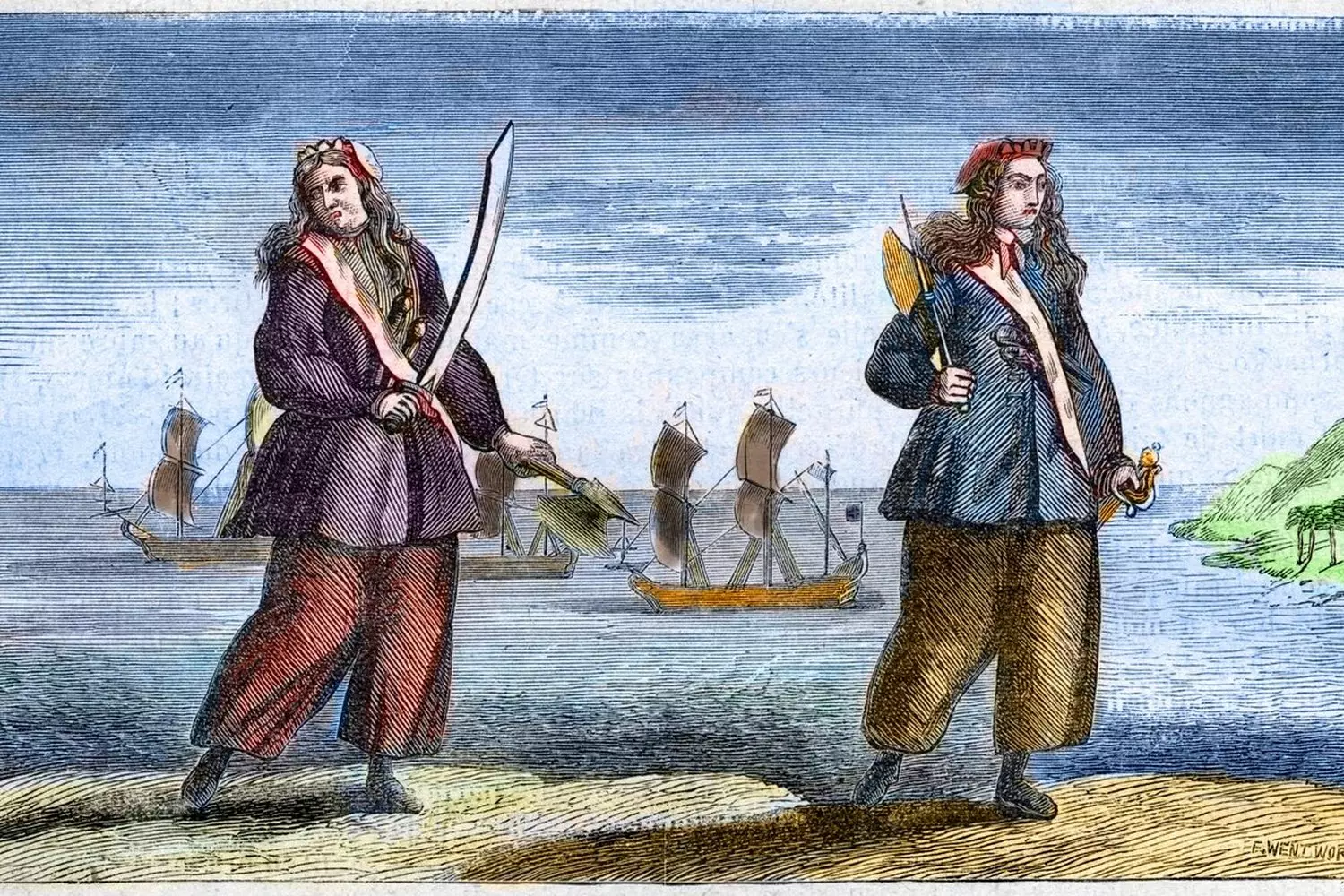
Legendary Pirate Ships of the USA: Floating Fortresses of Freedom and Fear
When it comes to pirates, the mind usually conjures images of fast, maneuverable ships with black flags, cannons along the sides, and crews ready to do anything for loot. In U.S. history, pirates also had their legendary ships — true symbols of maritime freedom, audacity, and defiance. These vessels were not just tools of robbery but an important part of history, inspiring sailors and writers alike.
- 01. Queen Anne’s Revenge: Terror of the Atlantic
The most famous ship associated with American shores is Queen Anne’s Revenge, commanded by the legendary Blackbeard (Edward Teach).
- The ship was armed with 40 cannons, making it a true floating fortress.
- Blackbeard used the vessel to attack merchant ships along the Atlantic coast of Carolina and Virginia.
- The ship became a symbol of power and fear: even the sight of smoking cannons on the horizon would cause crews to surrender without a fight.
Interestingly, after the ship sank off the coast of North Carolina in 1718, it became the subject of archaeological studies and diving expeditions, and its discoveries continue to fascinate historians.
- 02. Revenge and Ranger: Corsairs of the New Era
After the "Golden Age of Piracy," privateers and corsairs took the stage. Their ships, though legal, matched pirate vessels in audacity:
- Revenge
Used by Lafitte for attacks on British ships and smuggling, supplying American patriots with weapons. - Ranger
The ship of John Paul Jones, a participant in the American Revolution, used to capture British vessels. This ship became a symbol of the new U.S. Navy’s struggle against maritime threats.
These ships proved that even after the pirate era ended, the sea remained a stage for daring naval exploits.
- 03. Secrets of Design and Armament
Legendary U.S. pirate ships were notable for their special construction:
- Light and fast hulls allowed for quick maneuvering and escape from pursuers.
- A large number of cannons and carefully planned gun placements provided an advantage in boarding battles.
- Hidden holds and secret compartments allowed for storing loot, weapons, and supplies, as well as hiding the wounded or prisoners.
These technical solutions made the ships not only weapons but also symbols of the captain’s independence and cunning.
Fun fact: Some pirate ships captured by Americans or the British, after confiscation, became training vessels or patrol ships. In this way, part of the early U.S. fleet included ships that had once served pirates — turning their history upside down.
Today, U.S. pirate ships are not only museum exhibits or subjects of archaeological research. They live on in popular culture:
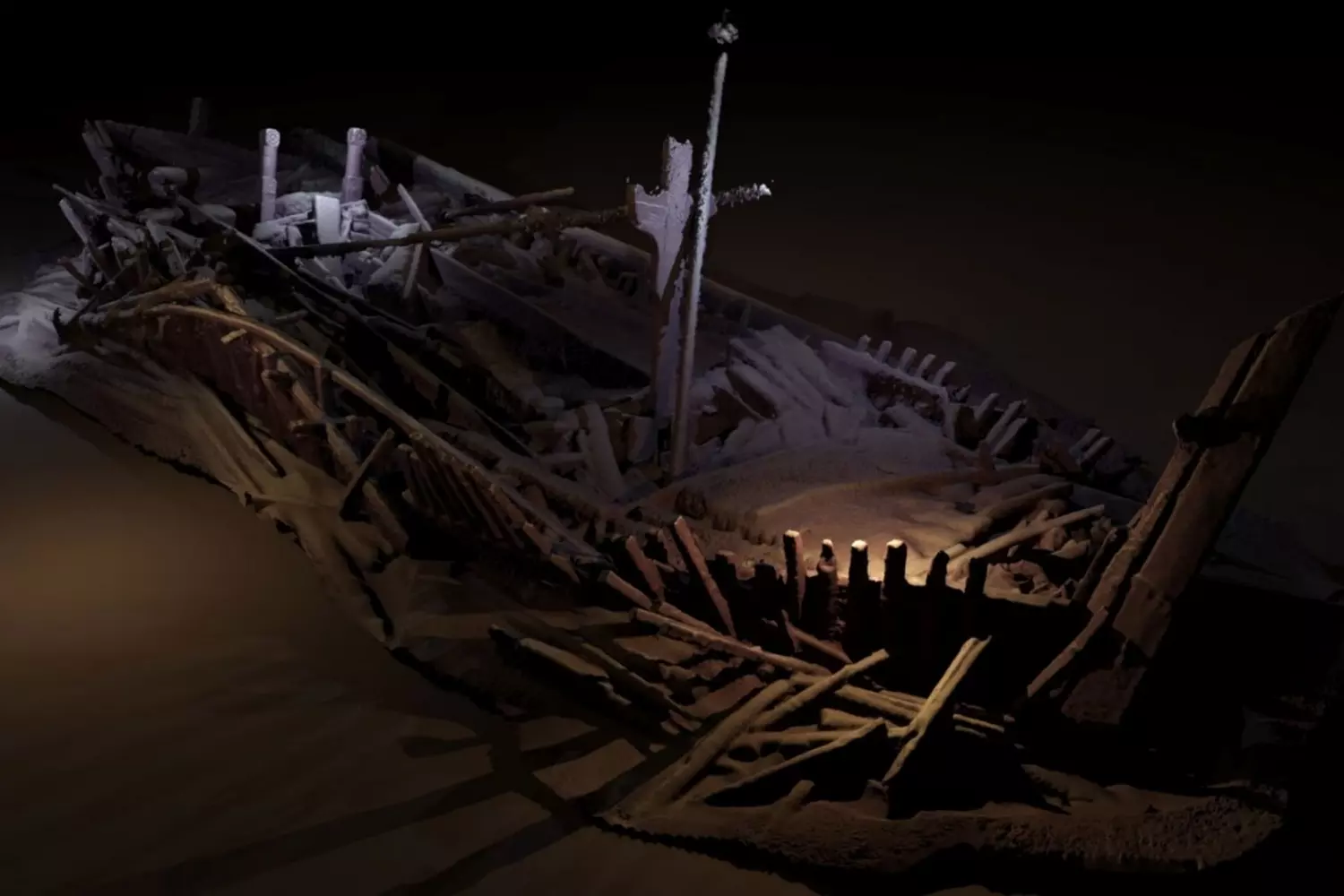
Pirate Legends and Myths of the USA: Treasures, Ghosts, and Hidden Stories
Pirates left behind not only dry historical facts but also a whole layer of legends that continue to spark the imagination of Americans. Every coastline, every bay, and every old port in the U.S. holds its own stories of treasures, curses, and mysterious ships.
- 01. Secret Treasures of Florida
Florida has always been considered the "Land of Gold and Silver". Spanish galleons loaded with treasures from the New World passed through these waters. Many were lost along the coast due to storms or pirate attacks.
Legend has it that some of these treasures remain buried along the shore. In the area of Vero Beach and Melbourne, gold coins and jewelry are still found, washed ashore after storms. It’s no coincidence that this part of the coast is called the "Treasure Coast". - 02. Jean Lafitte and His "Cursed Treasures"
One of the most famous myths is associated with Jean Lafitte. It is said that when leaving New Orleans, he hid part of his stolen gold in the swamps of Louisiana. According to legend, the treasures are protected by a curse, and anyone who tries to find them will be punished.
Even today, mysterious chests are sought in the swamps, and local guides tell stories of strange lights and sounds that frighten treasure hunters. - 03. The Ghost of Blackbeard
Edward Teach, better known as Blackbeard, became the hero of numerous legends. After his head was displayed on the prow of the victors’ ship, sailors claimed to have seen his ghost.
- At night along the coast of Ocracoke (North Carolina), one can supposedly hear his footsteps and see mysterious lights.
- Some fishermen still claim to have encountered the "head without a body" hovering above the water.
- Legend has it that Blackbeard’s spirit guards the place where his treasure is buried.
- 04. José Gaspar — the Pirate Who Never Existed
According to legends, he supposedly operated in Florida waters in the 18th century, raiding Spanish and English ships before tragically dying in battle.
However, historians argue that there is no evidence of his existence. Most likely, this figure was created in the 20th century to attract tourists. Yet the myth of Gaspar lives on — thousands of people annually "celebrate" his raids at the Gasparilla festival, dressing up as pirates and taking part in parades. - 05. Legends of Buried Treasure in New England
Pirate myths are not limited to the southern U.S. In New England, there are plenty of mysterious stories:
- In the state of Maine, rumors circulate about Captain Kidd’s buried treasures.
- On Block Island (Rhode Island), tourists enjoy hearing stories of mysterious chests buried under the sand.
- Some legends claim that "ghost dogs" were left by pirates to guard their treasures.
- 06. Pirate Legends in Popular Culture
All these stories have long become part of American culture:
- Local guides design tours around treasure myths.
- Festivals use the legends as the basis for scripts and events.
- Tourists eagerly believe in "curses" and "ghosts," as this adds a sense of adventure to their trip.
Fun fact: In the U.S., there are dozens of "treasure maps" created in the 19th–20th centuries based on pirate rumors. They were sold to tourists and adventurers as "real" maps, although almost always fake. Yet it was thanks to these maps that the phenomenon of "treasure hunting" emerged in the country.
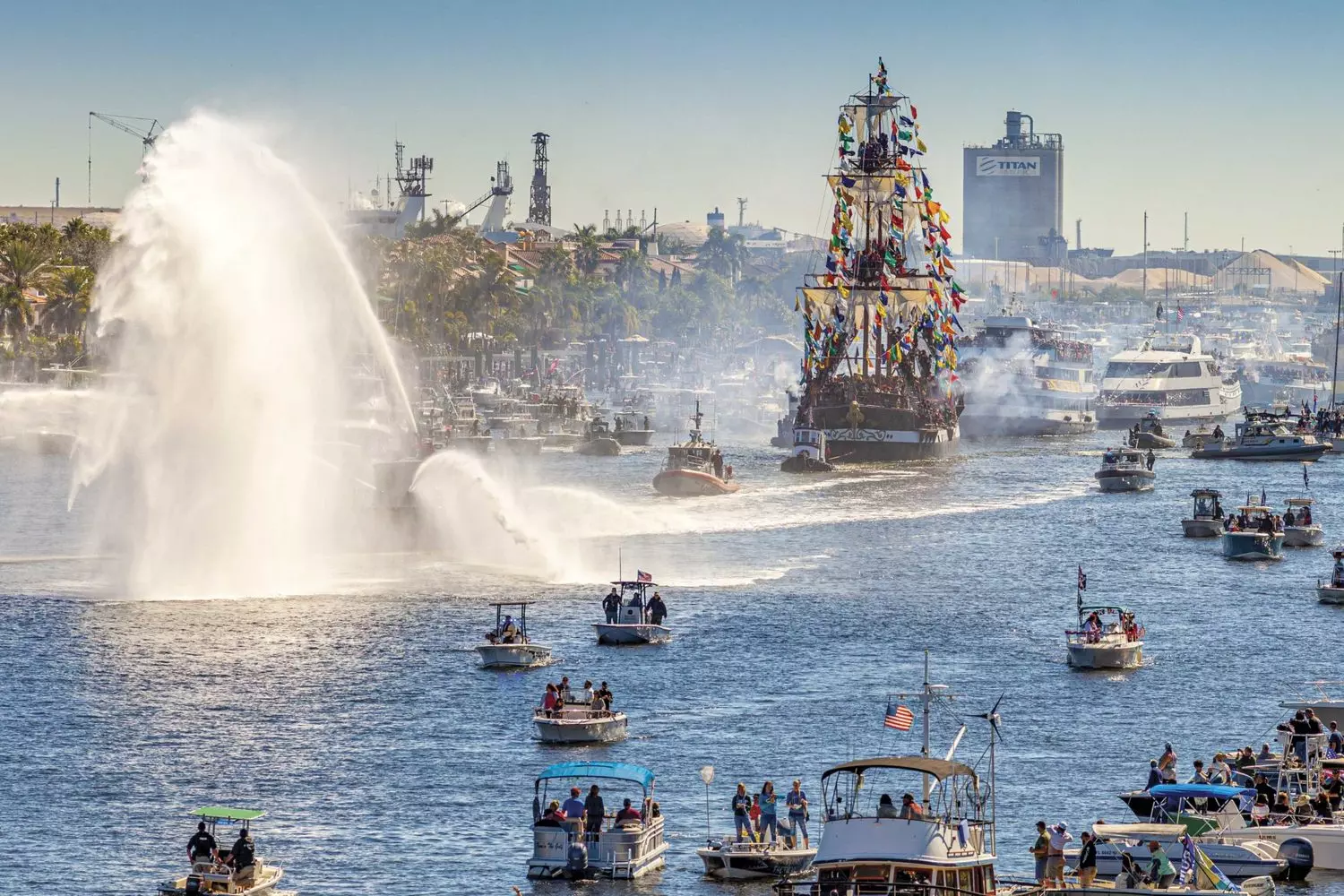
Pirate Museums, Theme Parks, Tours, and Festivals: Dive into the Era of Sea Raiders
U.S. pirates live not only on the pages of books and in old legends — their legacy is carefully preserved and comes alive in museums, parks, and interactive tours. Here, tourists of all ages can literally step into the past and feel like part of a pirate crew.
- 01. Pirate & Treasure Museum, St. Augustine (Florida)
This museum is considered the largest pirate museum in the U.S. and a true Mecca for lovers of maritime adventures:
- It houses weapons, sabers, and muskets used by real pirates.
- Visitors can see authentic treasure maps and chests filled with gold coins, both genuine and recreated.
- The exhibits tell the stories of Blackbeard, Jean Lafitte, Stede Bonnet, and other famous figures.
- Interactive quests and workshops allow tourists to learn pirate navigation and maritime skills.
- 02. North Carolina Maritime Museum
The museum in North Carolina serves as a center for studying the maritime history of the region and artifacts related to piracy:
- Exhibits include items recovered from Blackbeard’s ship and other pirate vessels.
- Visitors learn about pirates’ daily life, boarding tactics, and secret routes along the Atlantic coast.
- The museum offers tours and lectures, allowing guests to experience the interaction of pirates with the colonies.
- 03. French Quarter, New Orleans
The French Quarter was the historic arena of Jean Lafitte and today offers tourists walks through places where pirate life once thrived:
- Narrow streets, old buildings, and mysterious warehouses give a sense of early 19th-century atmosphere.
- Guides tell stories about Lafitte, his smuggling operations, and pirate legends of New Orleans.
- The area hosts theatrical tours and themed shows, turning a walk into a real adventure.
- 04. Pirate Adventure Cruises
For those seeking a live adventure on the water, there are special tourist routes:
- Excursions on styled pirate ships let visitors feel like members of a pirate crew.
- Children and adults can participate in simulated boarding actions, treasure hunts, and pirate games.
- These routes run along the coasts of Florida, Carolina, and Louisiana, combining historical facts with entertainment.
Fun fact: Some museums display real cannons and ammunition used by pirates. For example, St. Augustine exhibits 18th-century artillery used by Blackbeard and his contemporaries to defend their ships. It’s a rare opportunity to see history "live."
Pirate Worlds in American Theme Parks: From Shipboard Battles to Treasure Islands
In the U.S., piracy exists not only in museums and historical tours — it has moved into theme parks where adults and children can fully immerse themselves in the world of maritime adventures. Here, the pirate theme becomes a complete experience of boarding actions, treasure hunts, and sea battles, blending historical detail with entertainment technology.
- 01. Pirates of the Caribbean: Disney Magic
Perhaps the most famous example is the “Pirates of the Caribbean” attraction at Disney World and Disneyland:
- This is not just a carousel or boat ride: visitors find themselves on a pirate ship, witnessing scenes of battles and gold raids.
- Animation, sound effects, and set designs immerse guests in the atmosphere of the 18th century.
- The attraction is inspired by real pirate stories and popular legends, including Blackbeard and Jean Lafitte.
- Parks feature souvenir shops, restaurants, and shows, all designed in a pirate style.
- 02. LEGOLAND Pirate Island and Themed Zones
For families with children, areas in LEGOLAND and other parks are popular:
- On Pirate Island, kids can build LEGO ships, participate in treasure hunts, and complete water-based quests.
- Play areas include water battles, interactive games, and workshops, letting children feel like real young pirates.
- Special attention is paid to safety and educational content: kids learn about maritime traditions, navigation, and historical figures.
- 03. SeaWorld and Themed Shows
In SeaWorld and other marine parks, there are zones and shows dedicated to pirates:
- Theatrical performances include pirate boarding, sea battles, and ship stunts.
- Shows often use acrobats, stunt performers, and special effects, creating thrilling scenes that feel real.
- These zones are especially popular with teens and adults seeking the adrenaline of real maritime adventure.
- 04. Pirate’s Cove and Independent Parks
Besides major brands, the U.S. has many smaller parks and entertainment areas dedicated to piracy:
- Pirate’s Cove and similar places offer mini-attractions, themed restaurants, and quests.
- Visitors can navigate island mazes, board a "pirate ship," and discover treasure chests.
- These parks create interactive spaces where tourists become participants rather than mere spectators.
Fun fact: Some theme parks, such as Disney World, have recreated authentic historical ships and pirate captain’s cabins, allowing visitors to experience the 18th-century atmosphere. Attractions include detailed weaponry and treasure chests modeled after real pirate artifacts.
Pirate-themed parks and entertainment zones in the U.S. combine learning, history, and adventure, letting tourists of all ages experience the epic world of pirate seas. Here, the past comes alive, and the legends of Blackbeard, Jean Lafitte, and Stede Bonnet turn into an exciting interactive experience.
Modern Pirate Festivals and Shows in the U.S.: When History Comes Alive on the Streets
One might think piracy belongs only in history books and adventure novels, but in the U.S., it has long become a vivid cultural phenomenon. Today, "sea robbers" live on in costume festivals, theatrical performances, and street carnivals. Thousands of tourists visit different cities each year to see legends of Blackbeard and his companions come to life.
- 01. Gasparilla Pirate Festival: The "Pirate Carnival" in Florida
The largest and most famous pirate festival in the U.S. takes place in Tampa, Florida. Every year, at the end of January, the city’s bay is "captured" by a pirate ship led by the legendary Captain José Gaspar (or Gasparilla). According to legend, he was one of the last fearsome Caribbean corsairs.
During the festival, a huge pirate galleon with hundreds of costumed "robbers" enters the harbor. They stage a symbolic "capture of the city," and the streets of Tampa turn into a grand parade. Thousands of participants in pirate costumes, music, fireworks, and endless festivities make Gasparilla the American equivalent of the Rio Carnival — but in pirate style. - 02. Beaufort Pirate Invasion: "Pirate Takeover" in North Carolina
An equally atmospheric festival takes place in the town of Beaufort, once a refuge of Blackbeard. Every year, real sea battles are reenacted: actors in 17th–18th century costumes stage boarding actions, cannon fire, and sword duels. Tourists can visit the "pirate camp," taste dishes from historical recipes, and even learn maritime dances.
This festival is especially popular with families: interactive zones allow children to feel part of the crew — from cabin boys to fearsome captains. - 03. Key West Pirate Festival: A Tropical Version of Pirate History
In Key West (Florida), the pirate theme is so woven into local culture that an entire week becomes a theatrical show. Street parades, seaside parties, and costume contests take place. Most importantly, the festival embodies freedom and fun: tropical climate, reggae music, and Caribbean rhythms make it unique. - 04. Pirate Shows in Parks and Resorts
Besides street festivals, theatrical pirate shows are popular in the U.S. For example, in Orlando and Las Vegas, themed performances include ships, acrobats, and sea battles. Tourists can dine in a stylized tavern while watching a spectacle reminiscent of a Hollywood Caribbean adventure film. - 05. Why is it so popular?
Modern pirate festivals in the U.S. are not just entertainment. They offer a chance to touch history, even theatrically, feel the spirit of adventure, and experience life as a novel’s hero. They include freedom, spectacle, laughter, and a bit of adrenaline.
Most importantly, these events remind us that piracy in America is not just pages of the past, but part of the cultural heritage that delights tourists and inspires a new generation of adventurers.
Pirate museums, theme parks, and U.S. tours provide the chance not only to learn history but to become part of it. Tourists can smell the sea, hear the creak of ship boards, and experience the thrill of real maritime adventures, reliving the legends of Blackbeard, Jean Lafitte, and other pirates.
Want to dive into this whirlwind of fun? U.S. pirate festivals welcome you with open sails.
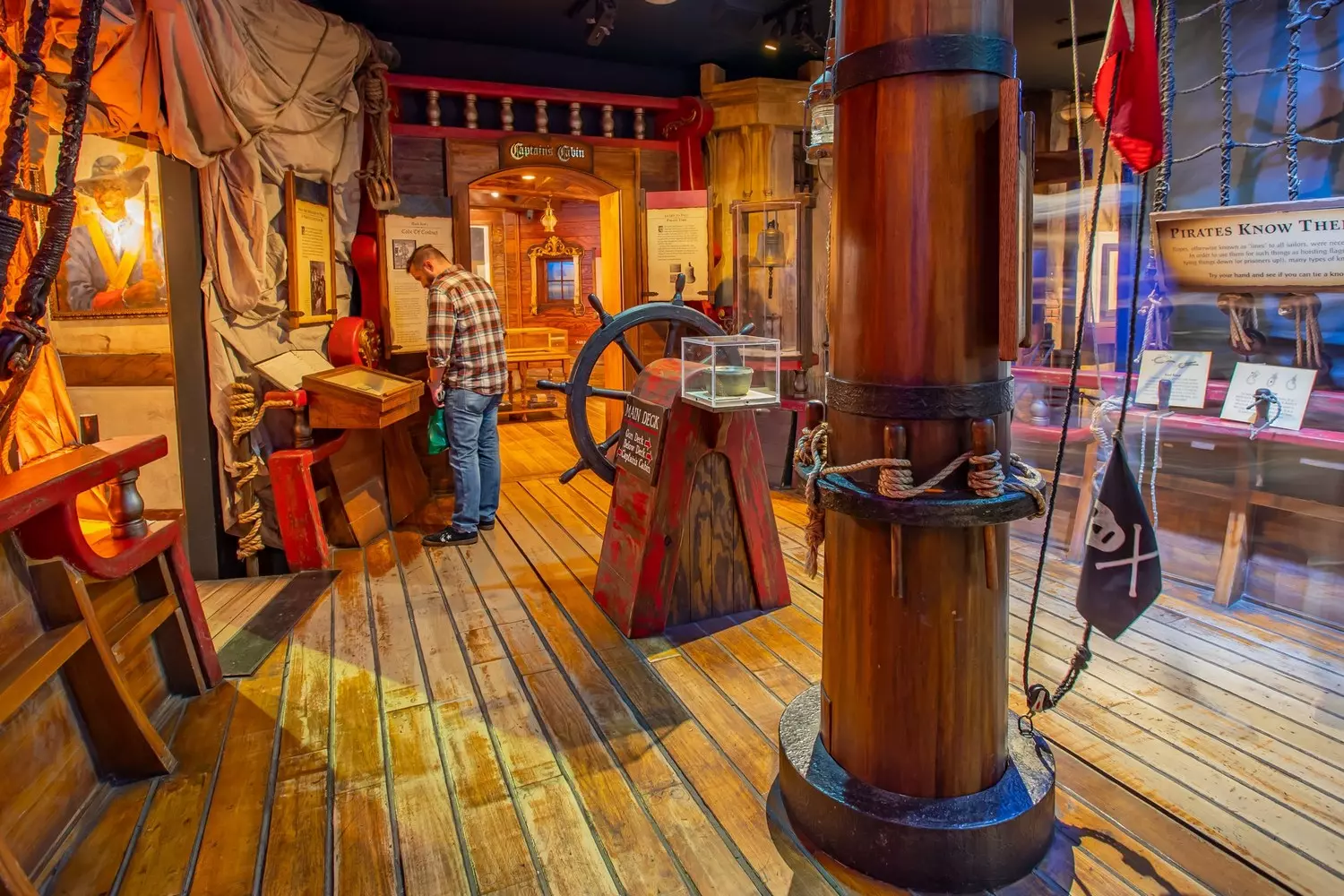
Pirate Culture in Modern USA: From Movies to Festival Parades
Piracy has long ceased to be just a story of the 18th century. In modern U.S., it thrives in popular culture, education, and entertainment, becoming a symbol of freedom, adventure, and daring. Pirate motifs inspire movies, theater, festivals, and even corporate events, making the theme accessible to all ages.
- 01. Film and Media: Legends Come to Life on Screen
Movies have played a huge role in popularizing the pirate theme:
- "Pirates of the Caribbean" made the pirate image iconic, inspiring a whole generation to explore maritime adventures.
- Characters like Jack Sparrow or Anne-Marie have become symbols of cunning, bravery, and charisma, reflecting the spirit of real sea robbers.
- In addition to films, TV series, cartoons, and documentaries tell stories about real pirate events and legends in the U.S., such as Blackbeard or Jean Lafitte.
- 02. Education and Themed Days
Piracy has become part of the educational process and cultural initiatives:
- Schools and universities in the U.S. hold "Pirate Day" — themed days when students and teachers dress in pirate costumes, organize games, contests, and short performances.
- Such events help study the history of piracy interactively, combining learning with entertainment.
- Many university societies and clubs use the pirate theme for social events and team-building activities.
- 03. Urban Quests and Pirate Festivals
In major cities and tourist centers in the U.S., pirate quests and festivals are popular:
- Tourists can participate in interactive treasure hunts, solve puzzles, and complete tasks, simulating the life of a pirate crew.
- Gasparilla Pirate Festival in Tampa is one of the most famous events, where the entire city transforms into a pirate ship. Parades, theatrical battles, and large-scale performances create the feeling of a real pirate adventure.
- In addition to festivals, companies offer pirate-themed weddings, corporate quests, and themed parties, integrating piracy into modern life.
- 04. Fashion and Accessories
Pirate motifs have also influenced fashion:
- Costumes, accessories, and jewelry with pirate symbols have become popular at festivals, cosplay events, and carnivals.
- Designers draw inspiration from figures like Anne Bonny, Blackbeard, and Jean Lafitte, creating outfits that combine historical accuracy with modern style.
Fun fact: During themed events and festivals, symbolic "treasure chests" are often hidden throughout city streets. Participants, including children and adults, compete to find these "treasures," making the celebration interactive and engaging.
Modern pirate culture in the U.S. is a living synthesis of history and entertainment, allowing tourists, students, and city dwellers to experience the spirit of adventure, feel the freedom of the sea, and become part of the legend. Piracy has become not just a part of the past, but an active element of contemporary American life, connecting generations and inspiring new adventures.
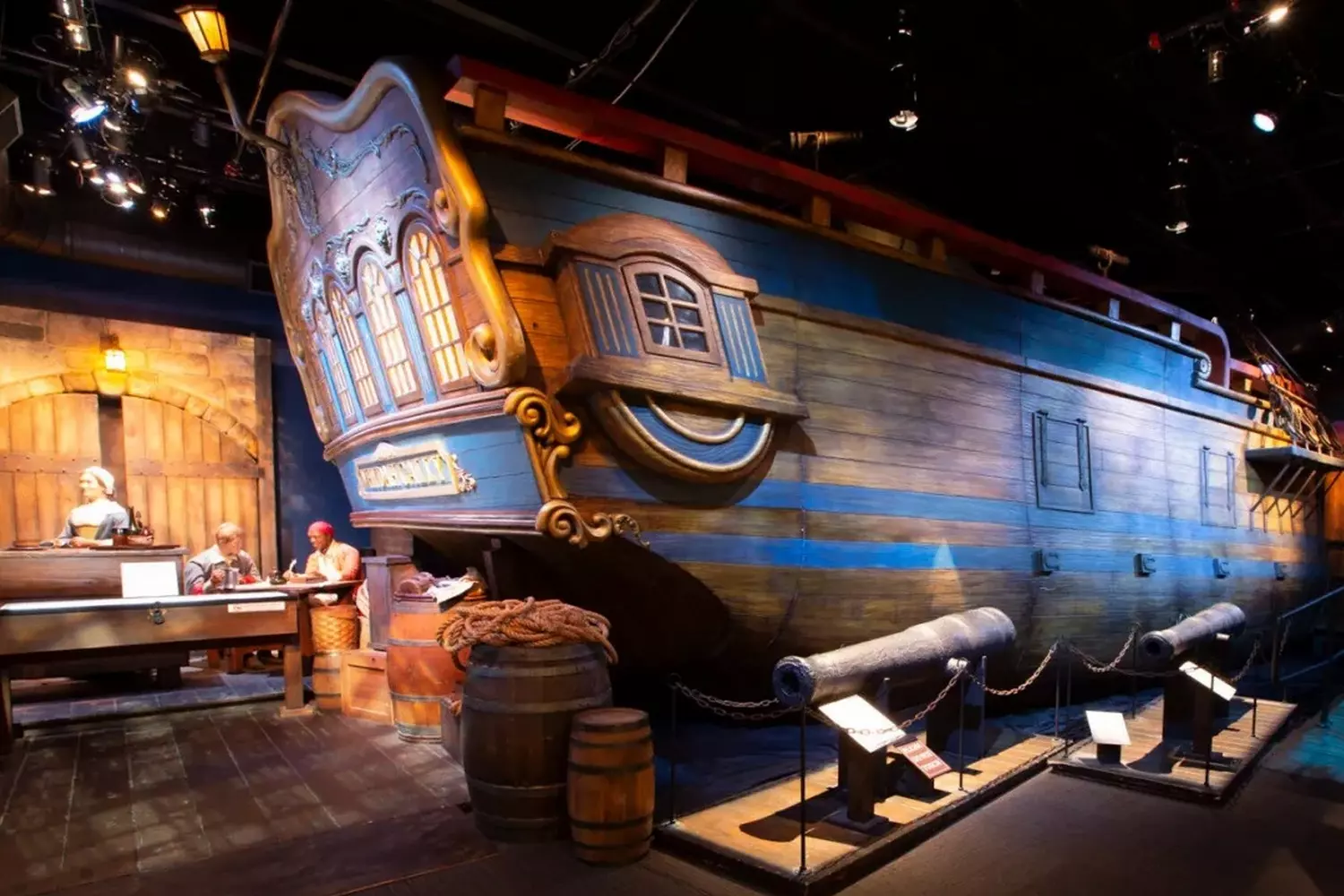
Hidden Chapters: Pirates Who Shaped American History
When we think of pirates, our imagination conjures images of the Caribbean, treasure, and legendary corsairs like Blackbeard. However, piracy was an integral part of early U.S. history — from colonial times to the War of Independence. These sea raiders not only plundered ships but also influenced the economy, politics, and even the formation of the American Navy. Here are some unique facts that reveal this fascinating connection.
- 01. "Jolly Roger" and the Modern U.S. Navy
The irony of history: pirate symbols were officially used by the U.S. military. In 2020, an American submarine returned to port under the pirate flag "Jolly Roger" — as a symbol of a successful operation.
- This tradition traces back to the U.S. Constitution, where Article 8 mentions Congress’s right to issue letters of marque and establish rules for capturing prizes.
- In this way, piracy, in a legalized form, became part of state policy.
- 02. Pirate Codes: Democracy on Deck
Pirate crews were often models of democracy and social fairness. They had strict codes regulating the division of loot, compensation for injuries, and even pensions. For example:
- The captain was elected by the crew and could be removed.
- Loot was divided equally, with the navigator or doctor receiving a larger share.
- Bravery was rewarded with bonuses. These principles contrasted sharply with the strict hierarchy of the royal navy and may have inspired ideas of equality in American society.
- 03. Pirates and Slavery: A Dual Role
Pirates often attacked slave ships, freeing captives. Some joined pirate crews, gaining freedom and a share of loot. However, other pirates participated in the slave trade themselves. For example, the famous Francis Drake combined privateering with slave transport. This duality reflects the complexity of the era, where piracy was not merely robbery but also a tool in the struggle for resources and influence. - 04. Pirate-Founder: How a Raider Helped Establish a Colony
Sir Francis Drake, though an English privateer (a legalized pirate), played an unexpected role in the history of what would become the U.S. In 1579, during his circumnavigation, he landed on the coast of California (near modern San Francisco) and claimed the land for the English crown, naming it "New Albion". This was England’s first claim to the Pacific coast of North America, later forming the legal basis for British territorial claims. Thus, a pirate indirectly contributed to the founding of English colonies. - 05. Pirate Capital in Louisiana
Long before New Orleans became a jazz capital, it was a hub for smugglers and pirates. In the early 19th century, the swamps and river delta labyrinths hid the famous pirate Jean Lafitte. He created an entire criminal "state within a state" — the settlement of Barataria. From there, his men attacked Spanish ships in the Gulf of Mexico and sold the loot through underground networks in New Orleans. Ironically, Lafitte later helped General Andrew Jackson win the Battle of New Orleans (1815) against the British, providing men, weapons, and cannons. - 06. Pirate "Cryptocurrency"
Pirates operating off American coasts rarely buried chests of gold — this is a myth. Their real "currency" was goods. Especially valued were:
- Sugar, tobacco, and cotton — easy to sell in any port.
- Rum — used as currency and to recruit new crew members.
- Canvas, ropes, tools, and medicines — essential supplies for ship repairs, often more valuable than gold.
- 07. Pirate as Unwitting Founder of the Kennedy Lineage
One of the first settlers in the American colonies was Thomas Kennedy, a Welshman who arrived in Massachusetts in the 1640s. According to some sources, before starting his respectable life in the colony, he was a pirate in the Caribbean, possibly even a member of the famous Henry Morgan crew. Settling in the New World, he changed professions, founding one of America’s most famous dynasties. His direct descendant was the 35th president, John F. Kennedy, whose love of the sea and service on a torpedo boat during World War II ironically echoed the adventurous spirit of his possible ancestor. - 08. Pirate-Abortionist from Manhattan
In the early 19th century, a pirate gang called "The River Gang" operated in New York. Its leader was the enigmatic woman Sade Fargo, also known as "Fate". She became famous not only for robbing ships in New York Harbor but also for running an underground clinic providing abortions, making her both a criminal and one of the few helping women at a time when such assistance was strictly prohibited. Her story is a dark example of piracy’s dual role as both illegal and sometimes socially significant. - 09. Utopian Pirates: The Republic of Raffailand
The most ambitious pirate state in North America was not in the Caribbean but inland, on the border of Texas and Louisiana. In the 1810s, pirates and smugglers led by Jean Lafitte planned to establish an independent republic, Raffailand. It was to be a libertarian utopia — a refuge for outcasts, free from U.S., Spanish, or any other authority. Although the project was never realized due to pressure from U.S. authorities, the idea reflected the radical dreams of freedom popular among pirates. - 10. Pirate Coffee Break
Pirates’ favorite drink was not only rum. Coffee played a crucial role in their diet. Pirates raiding Turkish and Egyptian ships in the Mediterranean often captured large coffee supplies. Thanks to them, coffee became popular in American port taverns in Boston and New York long before it spread among the general public. Some historians suggest that the famous "Boston Tea Party" of 1773 might not have happened if pirates had not helped make coffee a fashionable alternative to tea among colonists. - 11. Pirate Footprints in U.S. Toponymy
Many places in the U.S. are still named after pirates or commemorate them.
- Jean Lafitte Bay, Louisiana — named after the famous pirate.
- Skeleton Island, Georgia — legend says pirates hid treasure and buried their dead here.
- Devil's Bridge, Massachusetts — a rocky spot near Martha's Vineyard where pirates lit false lights to lure ships onto reefs for plunder.
- 12. Pirate Lawyer: How Blackbeard’s Defender Changed the Legal System
After Edward Teach (Blackbeard) was killed in 1718, his captured crew was tried in Virginia. Their defense lawyer was John Holloway, one of the few colonial attorneys. Although he could not save his clients from the gallows, his passionate speeches and appeals to the governor for a fair trial set an important precedent. Holloway insisted that even pirates had the right to due process and protection from authority abuse. His work drew attention to defendants’ rights and influenced the development of future judicial guarantees in the U.S. Bill of Rights. - 13. Pirate "Gold Reserve" of the Federal Reserve
Ironically, some of the gold captured by pirates in the 18th century ended up in the vaults of the U.S. Federal Reserve. How? Captured Spanish doubloons and silver pesos were long used as unofficial currency in the American colonies due to coin shortages. They were readily accepted in trade. Many of these coins, minted from pirate loot, were eventually melted down or incorporated into the young nation's gold reserve. So, the foundation of U.S. financial power may partially have pirate origins. - 14. The World’s First Underwater Archaeology Began with Pirate Treasure Hunts
In the 1930s, American inventor Harry Risberg, obsessed with pirate legends, built one of the first diving suits with an electromechanical air supply. On his ship "Rescuer", he conducted extensive searches for sunken pirate ships off Florida and the Bahamas. While he found no major treasure, his underwater excavation and filming methods were pioneering for the emerging field of underwater archaeology. His expeditions were funded in part by American patrons eager to experience pirate romance. - 15. Pirate Psychoanalyst: Neuroses of Sea Raiders
Diaries and court records from pirate trials became an unexpected source for medical historians. American psychiatrist Dr. I.D. Rockford in the 1970s analyzed evidence of famous pirates’ behavior. He theorized that many suffered from head injuries sustained in battles and mercury poisoning (from popular syphilis medicine — calomel). This could explain their volatility, paranoia, and extreme cruelty. Blackbeard, for instance, reportedly displayed symptoms of severe mental disorder. - 16. Pirate Code of Silence and the Birth of American Slang
Pirates developed their own argot (secret language) to avoid being understood by authorities and outsiders. Many of these words and expressions became part of American English:
- "Let the cat out of the bag" — possibly referring to the cat-o'-nine-tails hidden in a bag for flogging.
- "Shake a leg" — a phrase used to wake the crew and make them get up quickly.
- "Pipe down" — an order via the bosun’s pipe, telling everyone to go to their bunks and stop making noise.
- 17. New York: The Pirate Shadow Market Capital
In the late 17th century, New York (then New Amsterdam) was North America’s main pirate hub. Under Governor Benjamin Fletcher, the city openly welcomed pirates who sold their loot there. Fletcher personally made deals with them, taking a share of profits. Pirate captains like Thomas Tew were welcome at social gatherings. The city’s economy depended so heavily on pirate smuggling that when a new governor tried to end it in 1695, local merchants organized one of New York’s first lobbying campaigns in his defense. - 18. Pirate "Crypto-Wallet": The Oak Mystery
The most famous pirate mystery in the U.S. — The Money Pit on Oak Island — sparked the world’s first treasure hunt lasting two centuries. Legend says treasures of Captain Kidd were hidden there. More than $5 million (in modern equivalent) was spent searching, joint-stock companies were formed, engineers hired, and even Franklin Roosevelt participated in excavations in 1909. This venture foreshadowed modern crypto scams and financial pyramids, where people invested in mythical treasures that were never found. - 19. Pirate Footprint in the White House
Sixth U.S. President John Quincy Adams helped draft the Piracy Act of 1819, one of the harshest anti-piracy laws in history. The law authorized the U.S. Navy to pursue pirates worldwide and mandated the death penalty by hanging. Later, as president, Adams personally oversaw operations against Caribbean pirates. His diaries contain a detailed analysis of piracy as a threat to global trade, essentially formulating a doctrine of U.S. military intervention abroad to protect economic interests — a principle still relevant today. - 20. Pirate Flag as a Tool of Psychological Warfare
The famous "Jolly Roger" was not just a scare tactic. Its design and use were carefully thought out. Pirates off the American coast often used specific signal flags:
- Red flag — no mercy would be shown.
- Raised empty white flag — an offer to surrender.
- Black flag with hourglass — the victim’s time is running out. This was one of the first forms of mass psychological warfare, aimed at demoralizing opponents and minimizing combat. Its effectiveness was such that most ships surrendered without a fight upon seeing the famous flag.
Pirates were not just romantic robbers — they played a key role in shaping early American history. From privateering during wars to influencing trade and social norms, their legacy lives on in U.S. culture, politics, and naval traditions. These stories remind us that the line between pirate and patriot was often thinner than it seems.
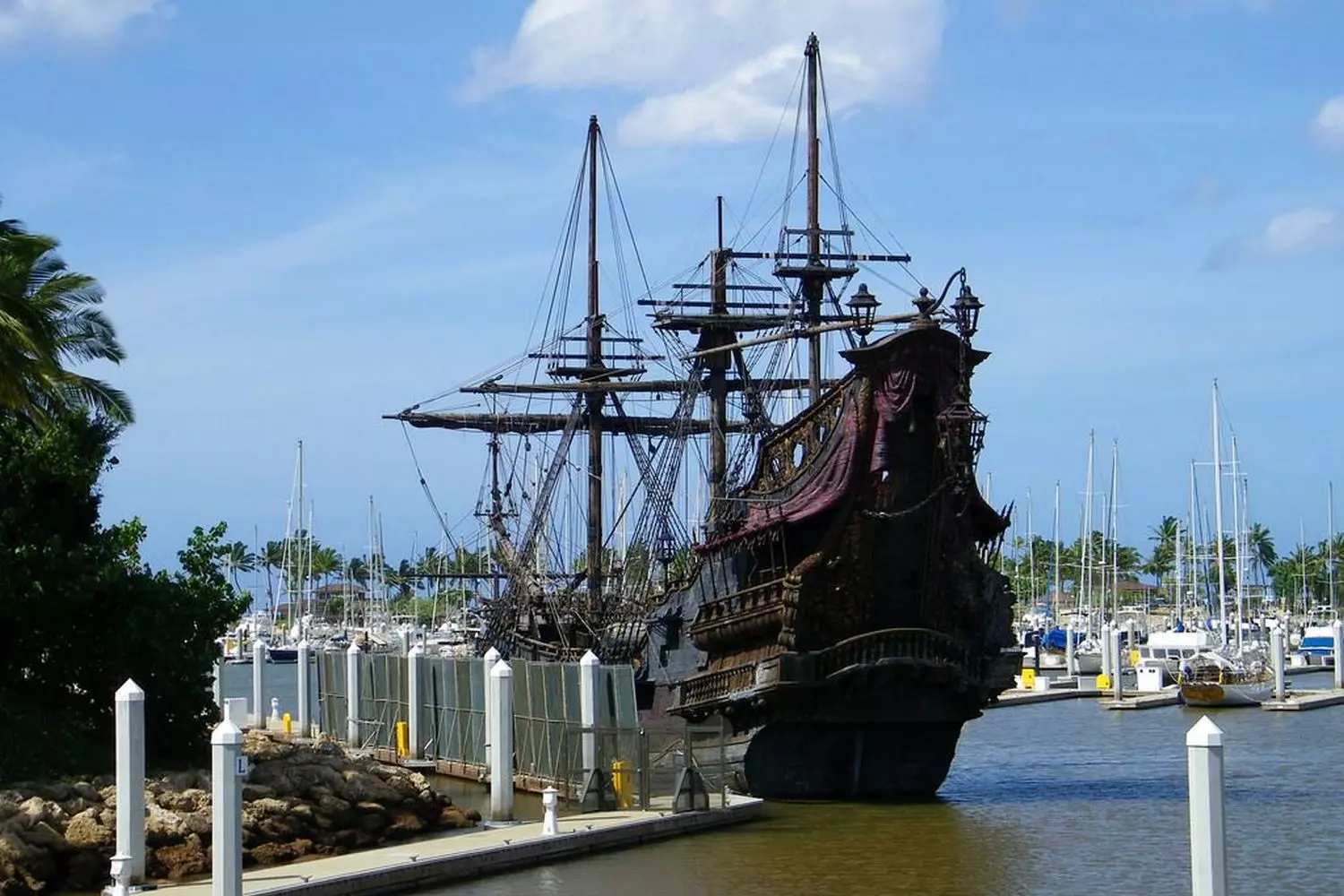
Pirates Not Just in Legends, but Also in Journeys with American Butler
Pirates in the USA are not just pages of history. They are the legends of Blackbeard and Jean Lafitte, the Tampa festivals, museums in Florida, and living adventures in New Orleans. For some, it’s a chance to touch the past; for others, a fun show; and for others still, a cultural experience.
With American Butler, you can embark on a unique journey following the footsteps of American pirates. We organize tours to museums, festivals, and historical sites, take care of your comfort, and make sure you feel like part of the legend.
Don’t miss your chance! Book your "pirate tour" with us and discover America from an unexpected perspective.














